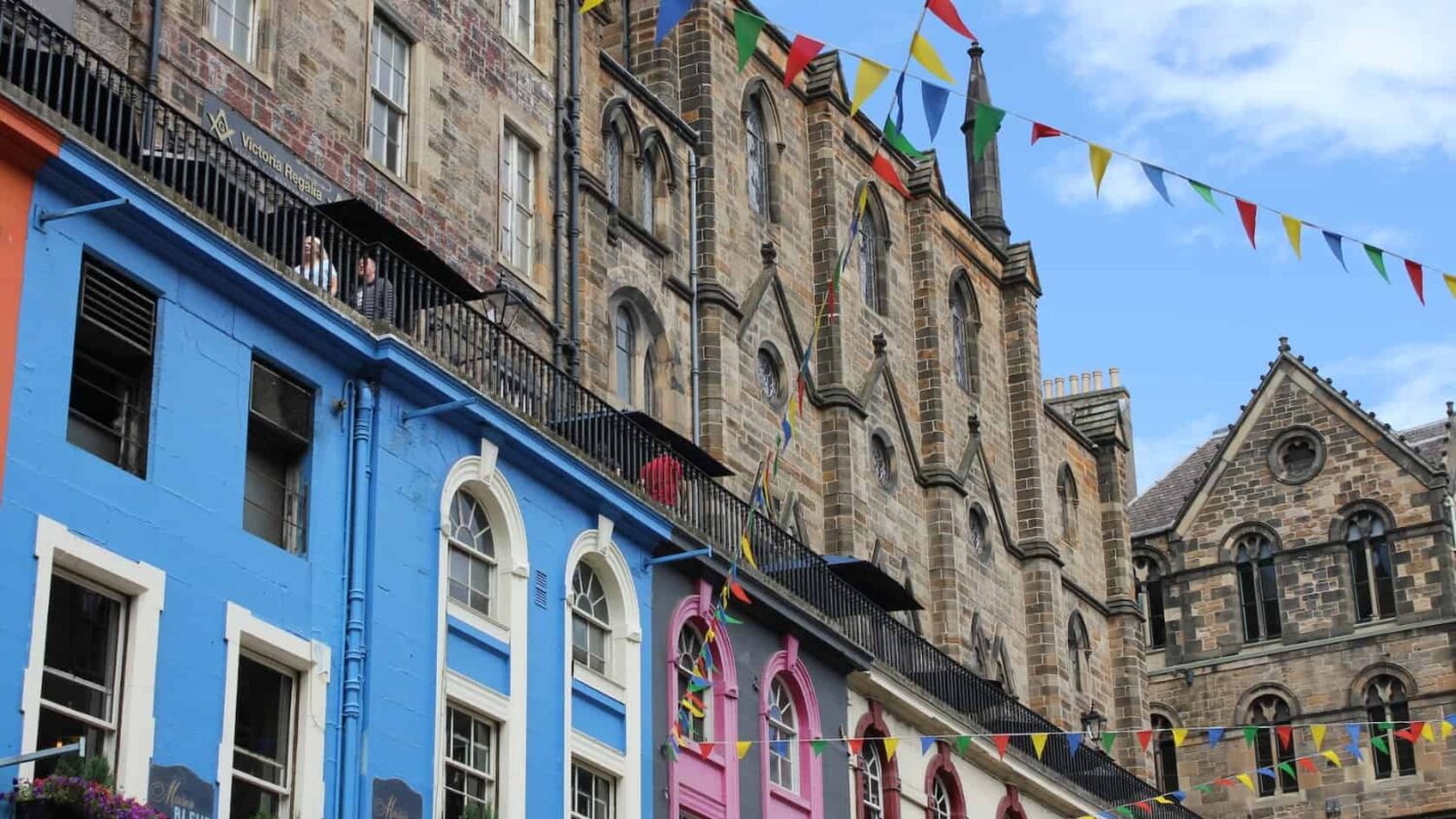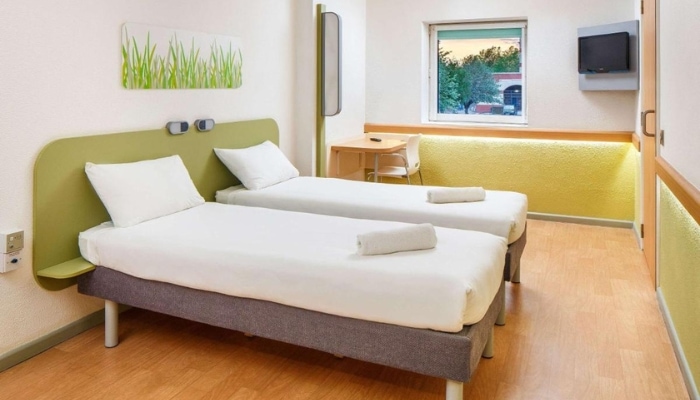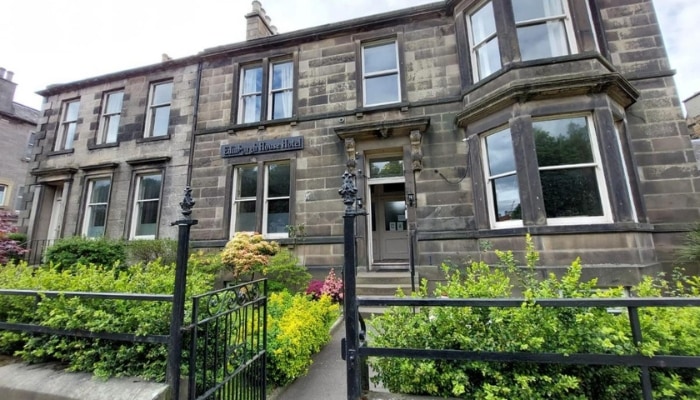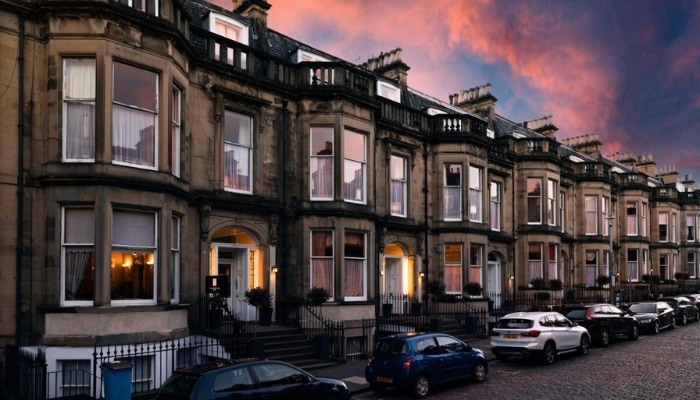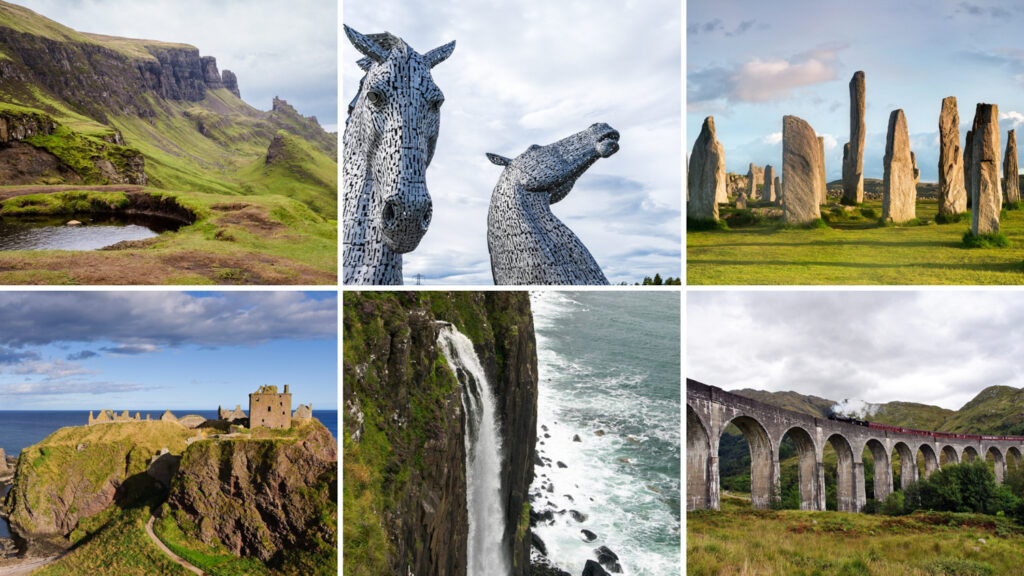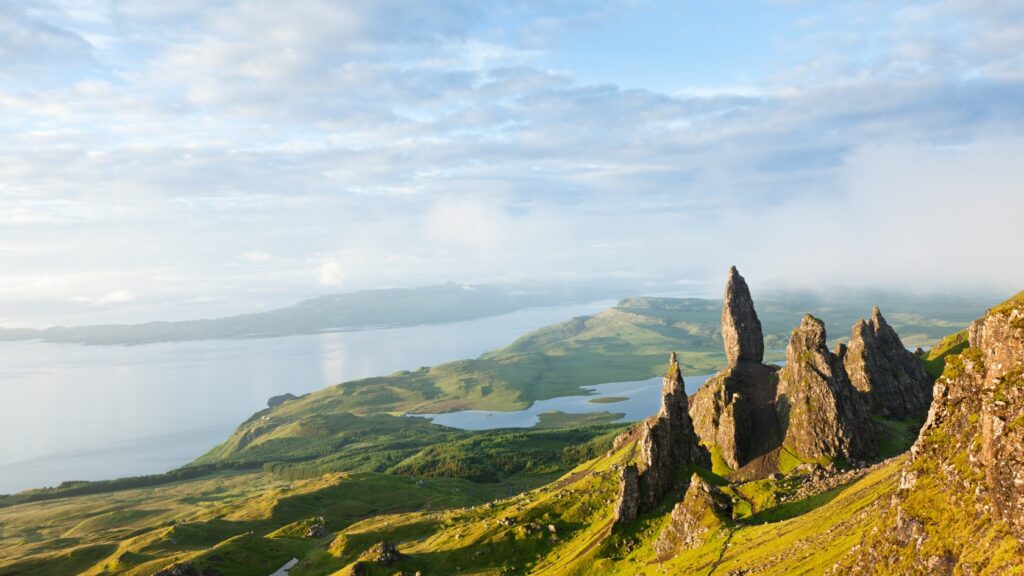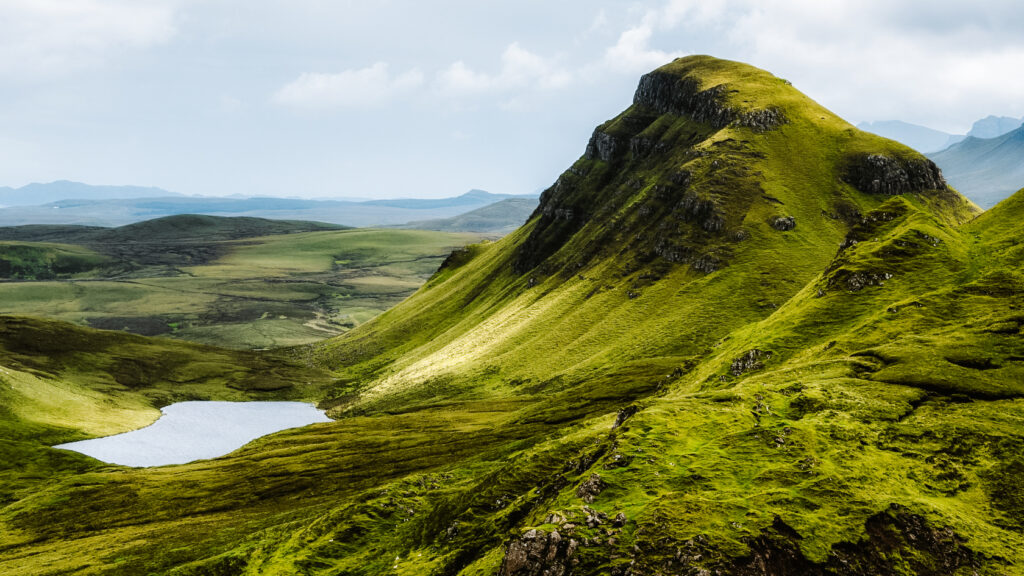Planning the best places to visit in Edinburgh? Check out the things to do in Edinburgh, Scotland.
I visited Edinburgh a few years ago. I still remember how much I enjoyed the rawness of the city and the Scots in plaid kilts on the Royal Mile below the castle.
Edinburgh perfectly captures the atmosphere of the whole of Scotland. You won’t find the colour and playfulness of Barcelona here. Or the sunshine of Tuscany or Lisbon or the elegance of Paris.
In Edinburgh, the fresh wind whips your face, you climb or descend downhill thanks to the undulating terrain here, and enjoy the places where the medieval and later Georgian periods are imprinted.
Edinburgh was named the most beautiful and best city to visit in 2022 by Time Out magazine. That sounds like a good reason to visit the Scottish capital. What do you think?
And if you love Harry Potter, you can’t miss Edinburgh. After all, Edinburgh was the biggest inspiration for author JK Rowling.
- Edinburgh: The Capital of Scotland
- Best Things to do in Edinburgh: map
- Things to do in Edinburgh, Scotland: Best places to visit
- Edinburgh Castle
- Royal Mile
- The Scotch Whisky Experience
- Camera Obscura&World by Illusions
- St Giles Cathedral
- Victoria Street
- Grassmarket
- Vennel Viewpoint
- National Museum of Scotland
- Greyfriars Kirkyard
- The Underground City
- Holyroodhouse
- Arthur´s Seat
- Scottish Parliament
- Canongate Kirk
- Scott Monument
- National Gallery of Scotland
- Princes Street Gardens
- Calton Hill
- Dean Village
- Circus Lane
- Royal Botanic Garden
- Royal Yacht Britannia
- Forth Bridges
- Trips around Edinburgh
- Where to stay in Edinburgh?
- How to get from the airport to Edinburgh city centre?
- Public transport in Edinburgh
- What to eat and where to eat in Edinburgh?
- Prices in Edinburgh
- What is the weather like in Edinburgh?
- Tips before visiting Edinburgh
- Find out more about the UK
- Edinburgh FAQs
Edinburgh: The Capital of Scotland
Where is Edinburgh?
Edinburgh is located in the south-east of Scotland on the Firth of Forth, where the river Forth flows into the city. The bay is part of the North Sea and is known for its large bird colonies.
With 500,000 inhabitants, it is the second most populous city in Scotland after Glasgow. Although not the largest, Edinburgh is the capital of Scotland.
Interesting facts about Edinburgh
There are few places in the world where you will find a city steeped in so many myths, mysterious histories and ghostly tales of witch hunts and murder. It rightly bears the nickname of a ghost town.
Edinburgh is also the first city with a fire service and the site of the invention of the telephone.
Most of Edinburgh’s sights and attractions are in the UNESCO-listed Old and New Towns.
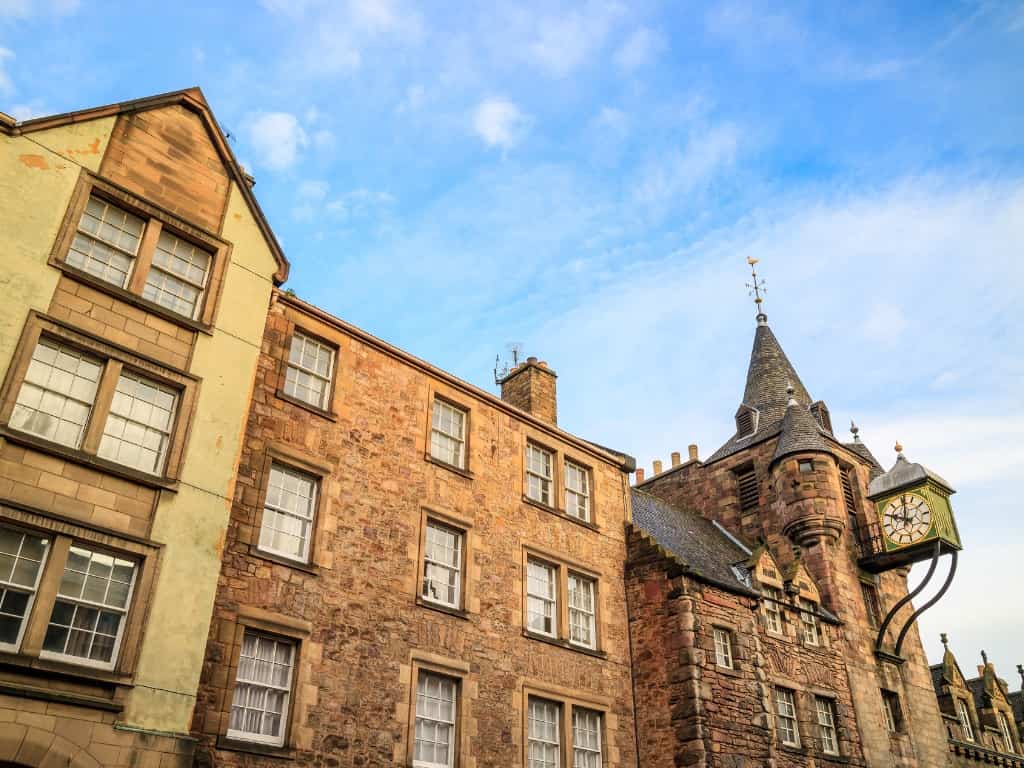
The old town is nestled between two extinct volcanoes on both sides. On one of them is Edinburgh Castle and on the other is Arthur’s Seat with a magnificent view of the city.
Edinburgh is the greenest city in the UK, with 112 parks. It even overtook London, which was classified as a forest due to its large number of parks and gardens.
Edinburgh hosts the biggest festival in the world. It’s called the Edinburgh Fringe Festival and runs throughout August. People from all over the area come here for the festival. It will generate a huge amount of funding and create 5,250 full-time jobs.
And best of all, Edinburgh is home to the world’s only penguin, knighted in 2008. 8 years later he was even promoted to Brigadier General by the Norwegian Guard.
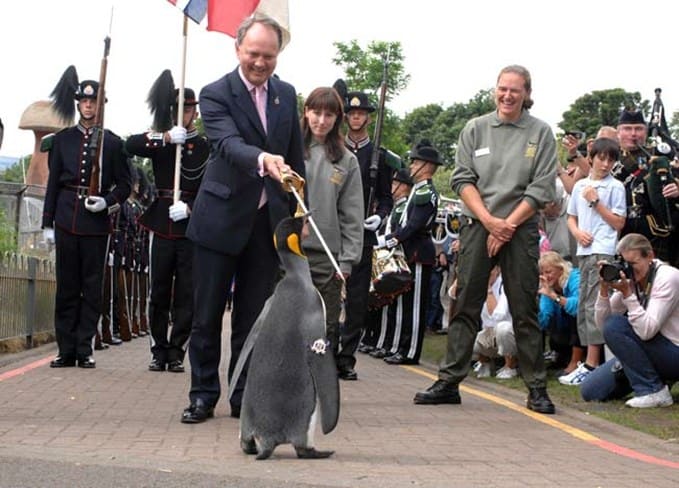
Best Things to do in Edinburgh: map
HOW TO USE THIS MAP: Above you will find a detailed map of Edinburgh. Click at the top left of the map to see separate layers with highlighted locations. You can hide and show the different layers or click on the icons on the map to see the names of the places I mention in my guide to the best things to do in Edinburgh. If you want to save the map, star it. For a larger version, click on the icon in the upper right corner.
Things to do in Edinburgh, Scotland: Best places to visit
Edinburgh is one of those cities where you can just walk around for hours and explore. Again and again.
The architecture here is unique and each neighbourhood has a different, unmistakable charm.
Still, there are a few places you shouldn’t miss. Here are the best things to do in Edinburgh.
Edinburgh Castle
Is there a greater Edinburgh icon than Edinburgh Castle, perched high on a volcanic spire? In the city centre, where you’ll always be able to see it from many places in the city?
Edinburgh Castle is the most visited attraction in the city. Yes, it is very touristy and the queues can be really long (especially in high season). But that shouldn’t deter you from visiting.
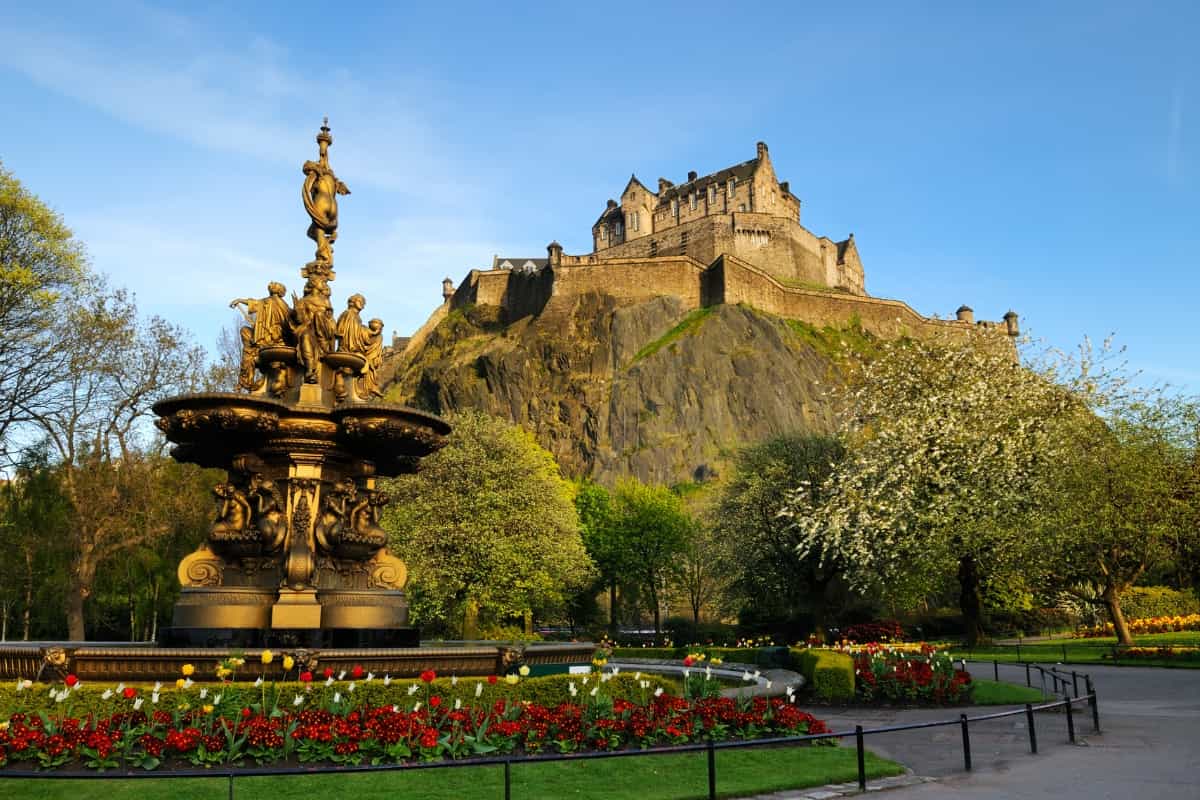
We started our visit here in the late afternoon and it seemed like the best start.
Edinburgh Castle takes you through a long and turbulent history. Here you can see the Scottish Crown Jewels and experience the spectacular views from the walls (with good visibility all the way to the coast). This gives you an overview of what to expect in Edinburgh right from the start.
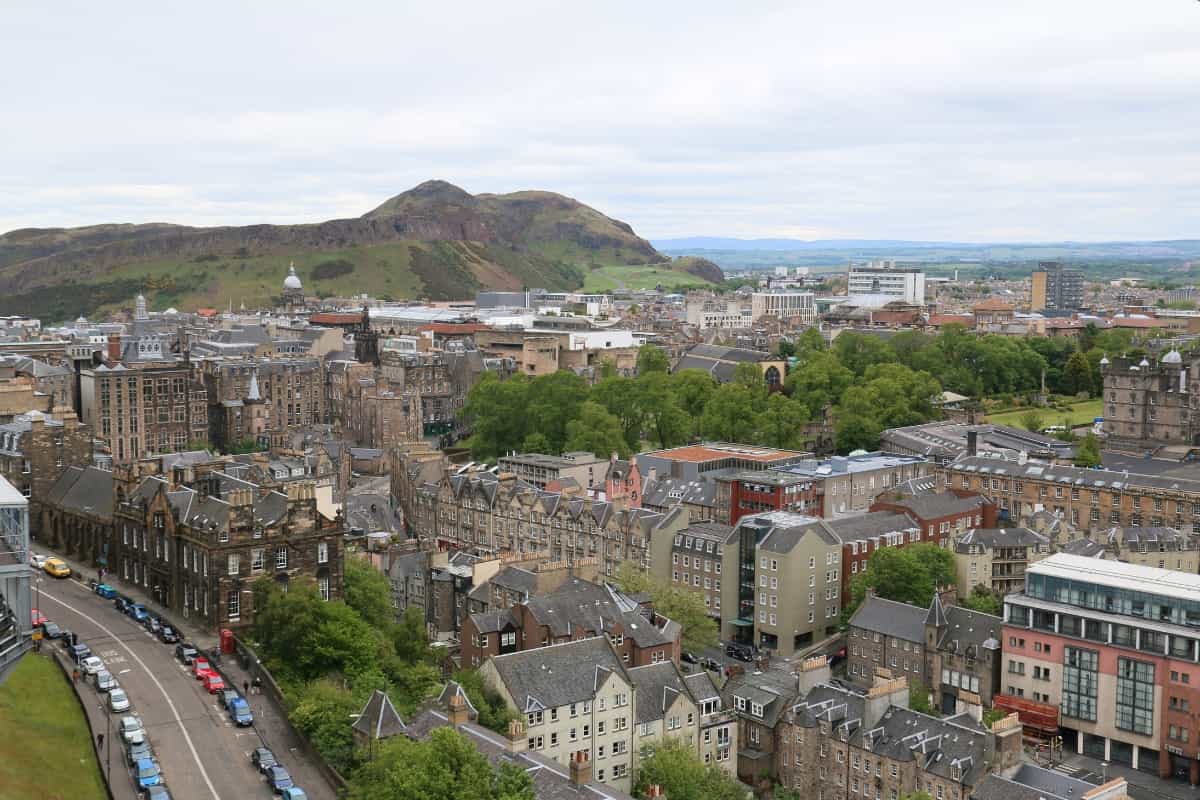
The castle dates back to the 12th century. It is vast and imposing. Allow at least 2 hours to visit it (even more in high season).
The tour includes a peek into Mary Stuart’s bedroom, several exhibitions (warfare, Scottish history, period paintings) and a memorial to the victims of World War I. At the Royal Palace you can enjoy the Crown Jewels (there can be long queues in high season).
Next to the crown jewels is the Stone of Destiny. It is a symbol of the Scottish monarchy and has been used for centuries to inaugurate kings.

Every day, except Sundays and holidays, the One o’clock Gun will be fired at exactly 13:00 from the field gun at Mill’s Mount Battery. Shortly before the shot, visitors to the castle start to gather here, so it’s best to arrive early for the best view.
If you’re walking in the Princes Street gardens below the castle, you’ll hear a gunshot too.
Shooting has historical symbolism. In the past, naval clocks in ships in the Firth of Forth were set according to the shot.
Edinburgh Castle can be reached via the historic Castlehill Lane, which is part of the Royal Mile.
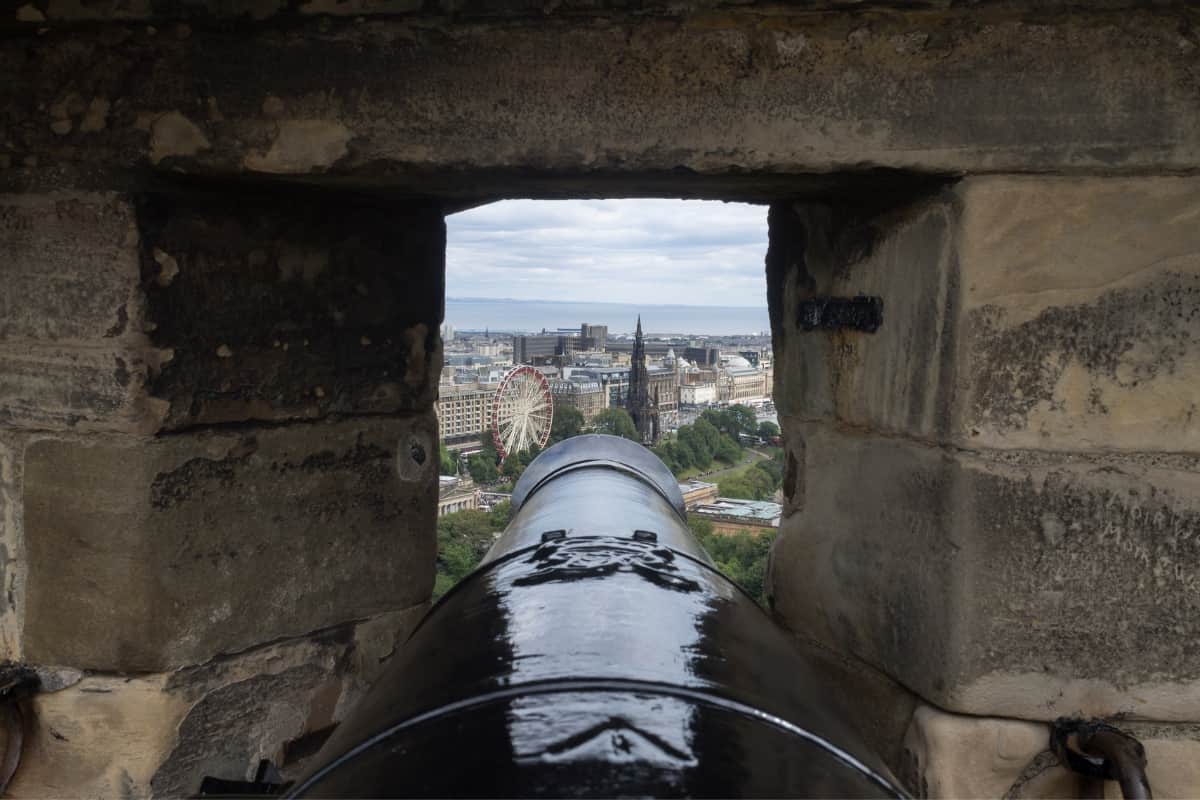
Admission and opening hours of Edinburgh Castle
Admission to Edinburgh Castle costs £19.50 for 16-64 year olds, £15.50 for 65+ and £11.40 for children aged 5-15. Children under 5 years old get in for free, like many other Edinburgh attractions.
Opening hours vary by season:
- 1 April – 30 September 9:30-18:00 (last entry at 17:00)
- 1 October – 31 March 9:30-17:00 (last entry 16:00)

How to avoid the queues for Edinburgh Castle?
Edinburgh Castle is very touristy. But that shouldn’t deter you from visiting. It just takes better planning. Especially during the season.
My main recommendation is to book your ticket in advance. You won’t have to queue for tickets and you’ll significantly reduce your wait.
Plan your visit closer to opening hours – early in the morning or later in the afternoon. In this case, I would recommend visiting in the late afternoon – if you are lucky enough to have clear skies, the light from the castle is beautiful.
Also a popular option are guided tours where the guide highlights the best points and you can learn interesting facts about the history of the castle. Tours last 90 minutes and are conducted in English.
Royal Mile
The Royal Mile is the iconic cobbled pathway connecting Edinburgh Castle and the Palace of Holyroodhouse (more about it later in this article). It is just over 1 mile long and surrounded by shops, restaurants, pubs and bars.
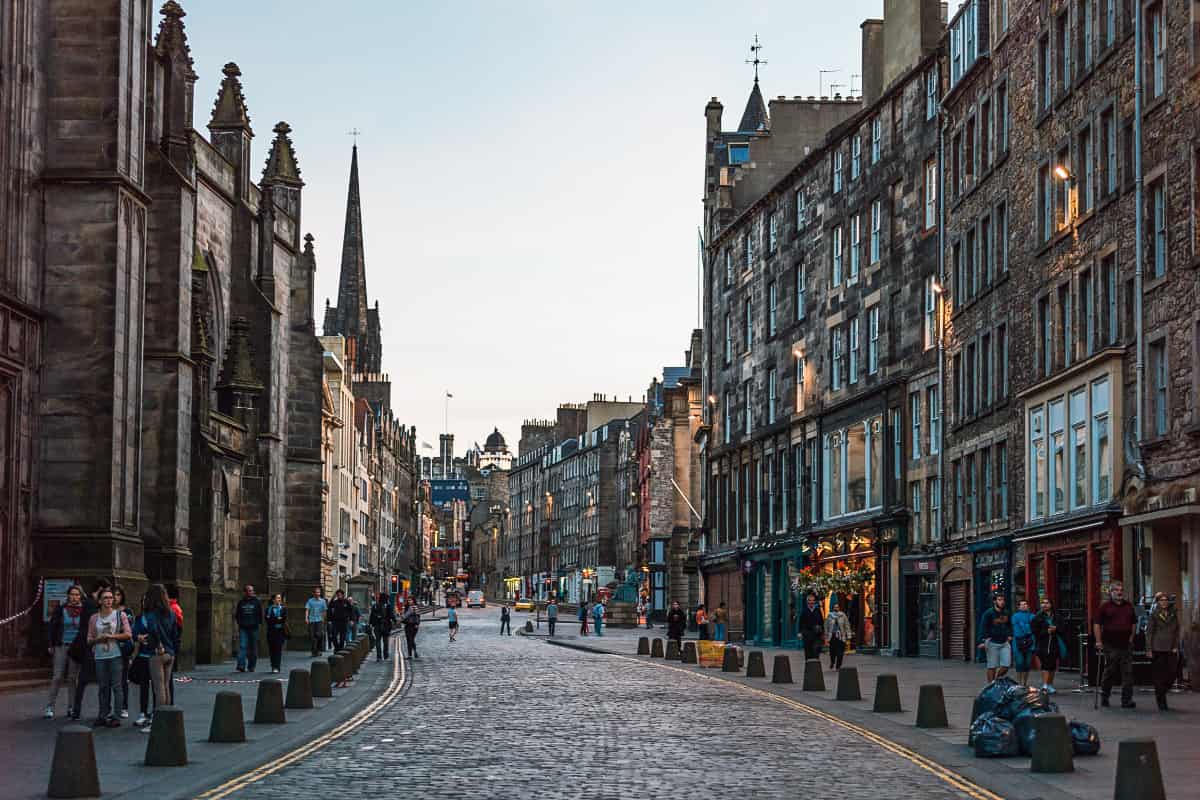
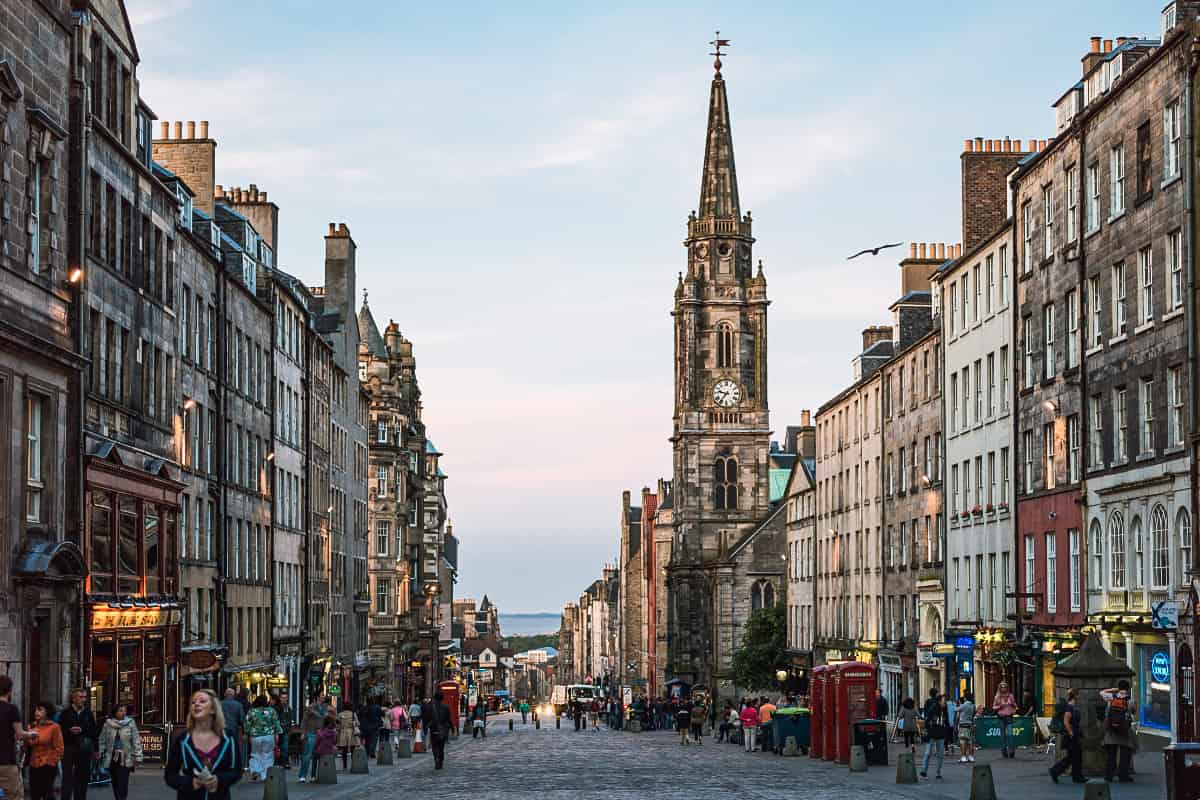
And I mustn’t forget the street performers. Just in front of the castle are bagpipers in plaid kilts.
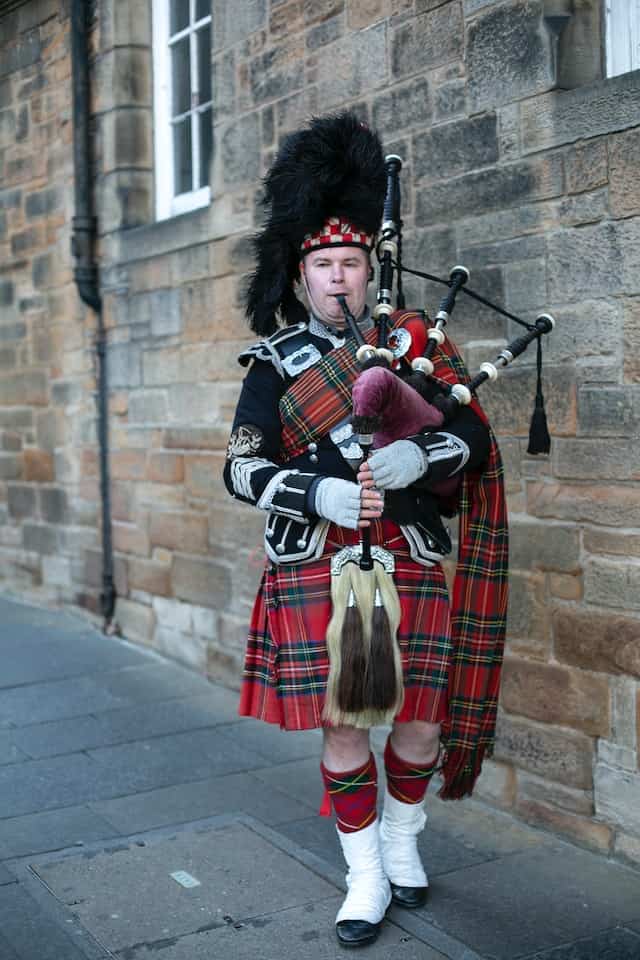
Most cities have a main street where the biggest crowds of tourists go. In the case of Edinburgh, it is the Royal Mile.
But you won’t find the Royal Mile on the map. It is not an official street name. The Royal Mile is made up of several shorter streets that connect to each other. Part of the path is for pedestrians only.
Other streets, called closes, branch off from the Royal Mile. You can spend an afternoon wandering around, window shopping and discovering hidden corners and excellent restaurants.
Read: The travel guide to Scotland
The Scotch Whisky Experience
Scotland and whisky go hand in hand. In The Scotch Whisky Eperience you can learn everything you can think of about Scotland’s national drink.
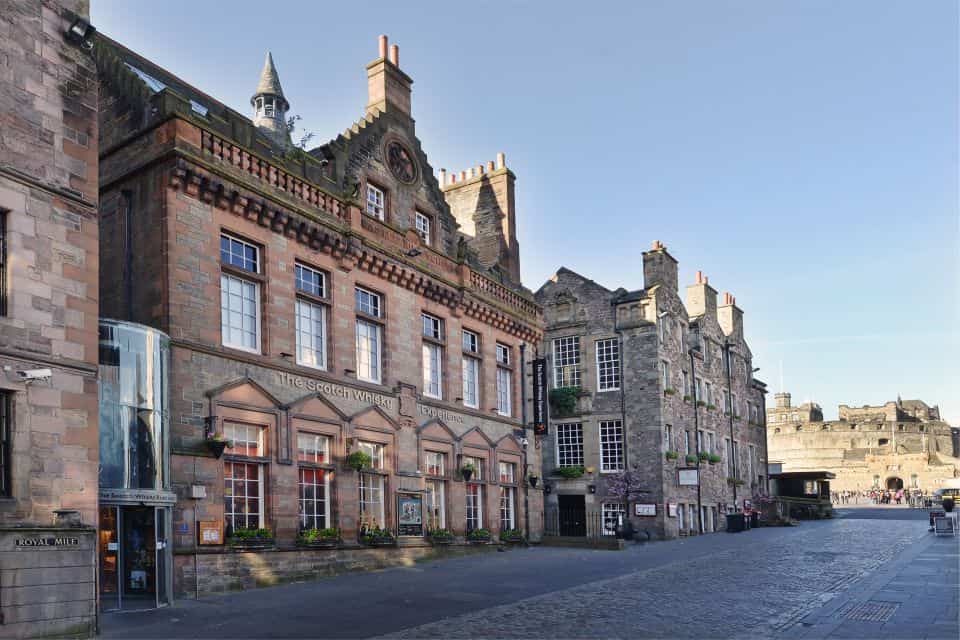
During our visit to Scotland we also visited the Talisker distillery on the Isle of Skye. It was a good tour, but The Scotch Whisky Experience is a lot more fun.
Educational and interactive at the same time, so it will also interest children and those who don’t like the taste of whisky (yes, I’m applying).
Did you know? The term whisky is used for whisky from Scotland, Canada and Japan. Whiskey, on the other hand, is produced in the United States and Ireland.
The Scotch Whisky Experience is located in a beautiful historic building on the left hand side of Castlehill (looking towards the castle).
Tour The Scotch Whisky Experience
There are several types of tours to choose from. Already basic Silver Tour offers more than enough – a cask ride that takes you into a virtual distillery. The guide then adds lots of interesting facts about whisky and its history and production.
At the very end, you’ll enjoy a tasting (18+; you can keep a glass as a souvenir) and a visit to the shop with the largest selection of Scotch whisky in the world.

The tour lasts 50 minutes.
Don’t forget the audio guides (available in Spanish, Chinese, Czech, Dutch, English, French, German, Hindi, Italian, Japanese, Korean, Polish, Portuguese, Russian, Scottish Gaelic, Swedish).
Admission and opening hours
Admission starts at £23 (Silver Tour for an adult). Open daily 10:00-18:00. Get your tickets here.
Camera Obscura&World by Illusions
Illusions’ Camera Obscura&World is just across the road from The Scotch Whisky Experience, a short walk from Edinburgh Castle.
5 floors full of fun illusions, optical tricks and surprises await you. On the top floor is the historic Camera Obscura, the highlight of the visit. Finally, enjoy panoramic views of Edinburgh from the tower.
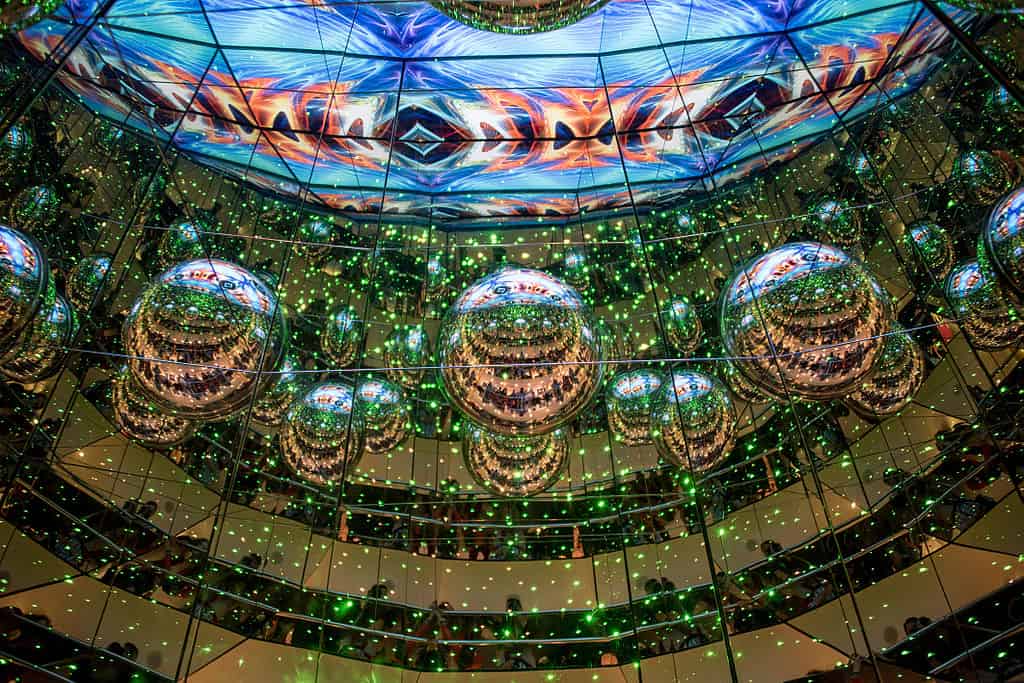
If you’re coming to Edinburgh with kids, this is a must-stop. But you can also enjoy it without children.
Allow 1.5-2 hours for your visit.
Admission and opening hours Camera Obscura&World by Illusions
Admission costs £21.95 for 16-64 year olds, £19.95 for students and 65+ and £16.95 for children aged 5-15.
Tickets is better to book in advance (especially in the high season, tickets are often sold out), even for children under 5 years of age, who are otherwise admitted free of charge. You don’t need to print anything, just show your booking confirmation.
It is open daily at the following times: Monday to Thursday 9:30-19:00, Friday 9:00-21:00, Saturday 9:00-21:30, Sunday 9:00-21:00.
St Giles Cathedral
St Giles Cathedral is located on the Royal Mile, 5 minutes from Edinburgh Castle. It’s one of the most beautiful places in Edinburgh and a definite must-see. It is built in Gothic style and the nave has a deep blue ceiling.
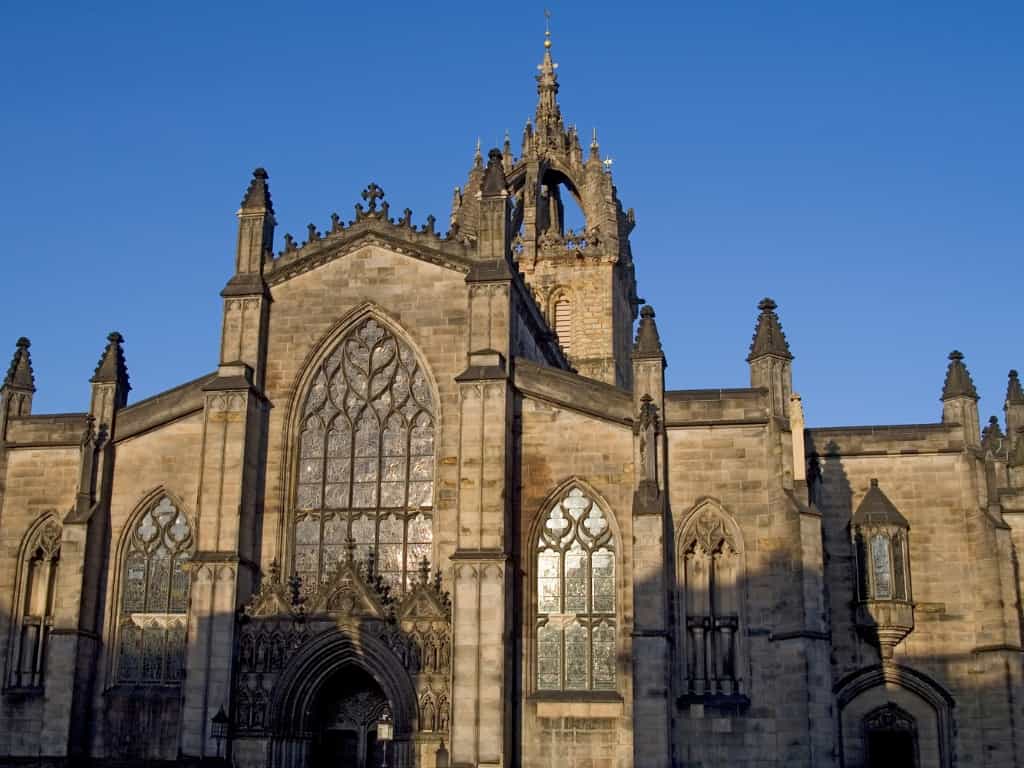
St Giles Cathedral was the centre of the Scottish Reformation and the parish church of John Knox, whose preaching inspired the transformation of Scotland as an official Protestant country in the 16th century.
Today it is the main church in the town.
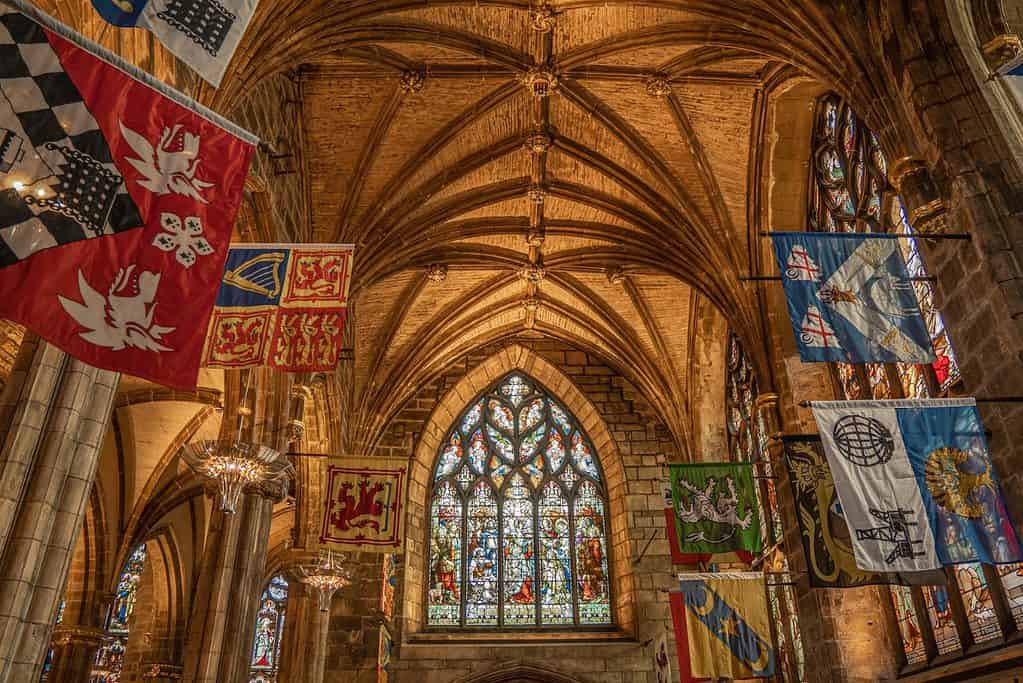
The cathedral is famous for its Thistle Chapel, which houses the Order of Thistles. One of the most famous and noble orders of chivalry in the United Kingdom.
You can visit the Cathedral for free (a suggested donation of £5 is welcome). Open daily – Monday to Friday 10:00-18:00, Saturday 9:00-17:00, Sunday 13:00-17:00.
The Thistle Chapel is only accessible during the free tour (45 minutes). It takes place from Monday to Friday at 10:30 and 14:30. You have to find a place book in advance .
Hotels in Edinburgh 😴
Victoria Street
We still stay in the Old Town, which is interwoven with beautiful streets. One of them is Victoria Street, full of colourful shop windows, shops and restaurants.
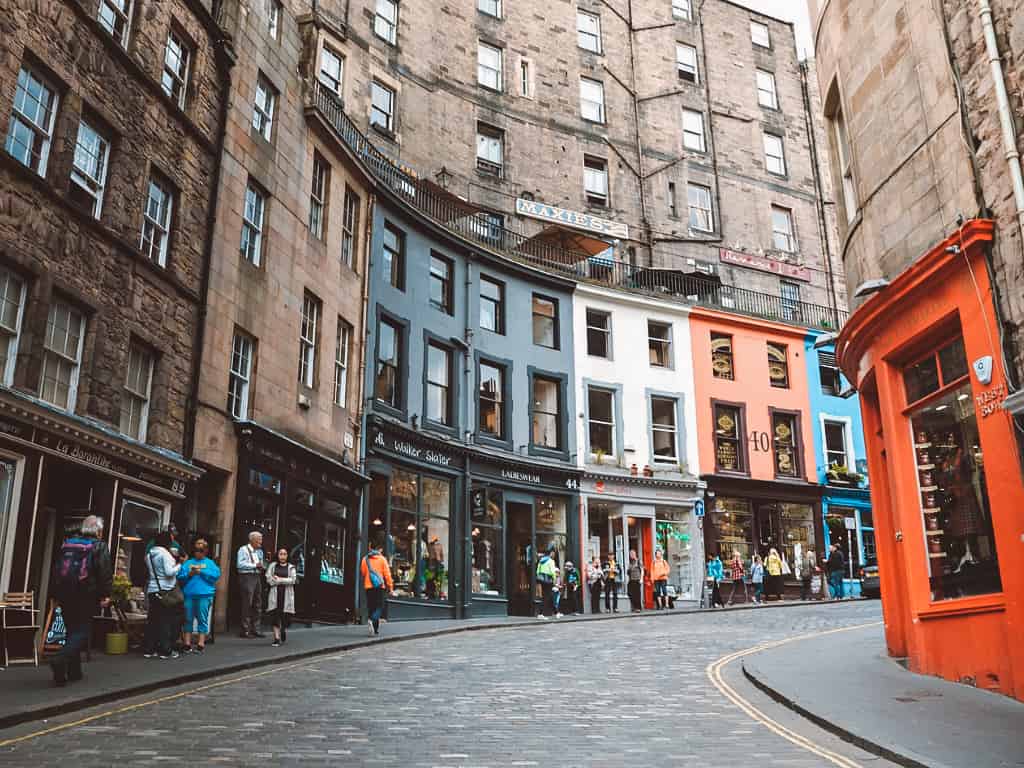
You can get here by taking a short detour from the Royal Mile. If you walk from the castle, after 5 minutes several streets branch off near the church. Take the narrowest street on the right, which will take you to Victoria Street.
Before you step onto Victoria Street, there is a turn off to the terrace on your right where you can see the street from the top (see initial photo).
Grassmarket
The exit of Victoria St is the Grassmarket. A lively square full of restaurants, pubs and bars. What’s more, the view of Edinburgh Castle is spectacular.
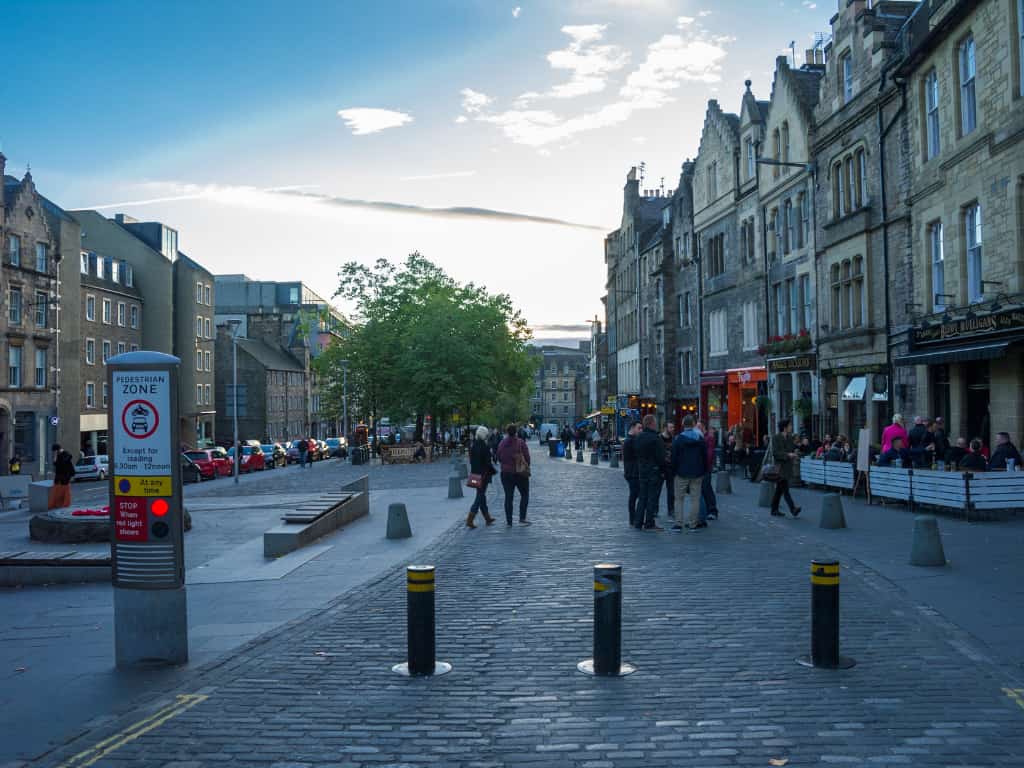
Vennel Viewpoint
Just a few steps from the Grassmarket, you’ll get a great view of Edinburgh Castle on the steps by the remains of the original Flodden Wall.
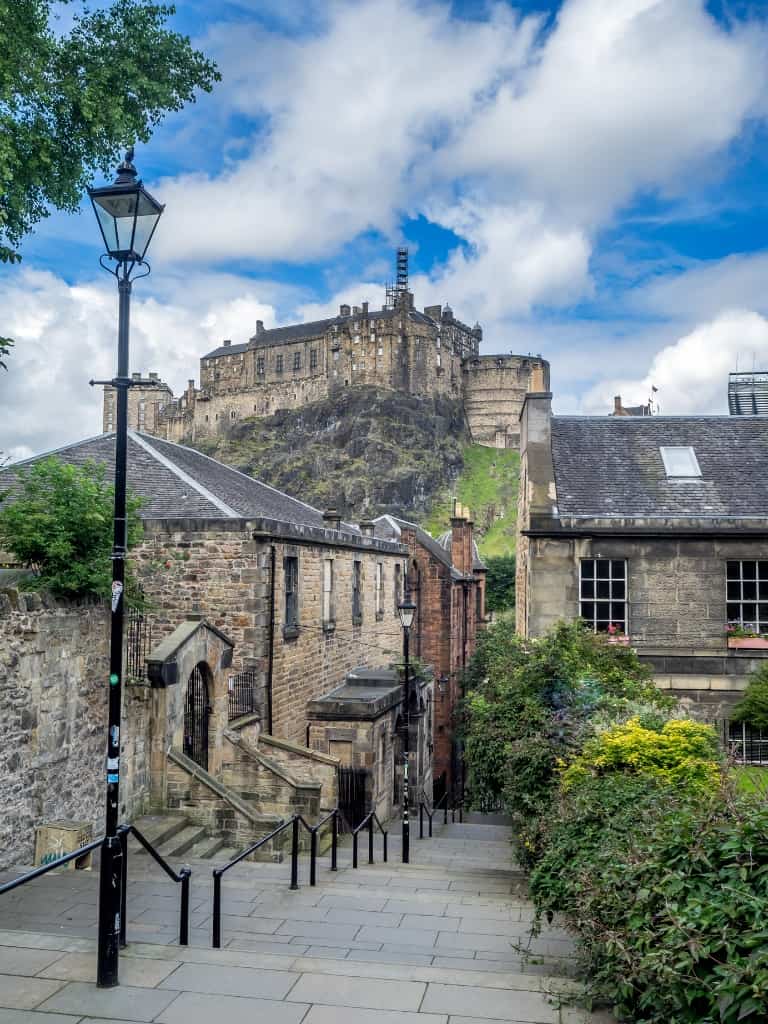
It’s easy to get here – walk through the entire Grassmarket Square until you see a narrow set of stairs on your left. Once you climb up the stairs a little higher, you will get a beautiful view of the castle.
National Museum of Scotland
The National Museum of Scotland should not be missed when visiting Edinburgh. The complete guide to Scotland under one roof – natural history, history from prehistory to the present day, space, humanity or technology.
A fun, interactive, modern museum where all ages will be entertained.
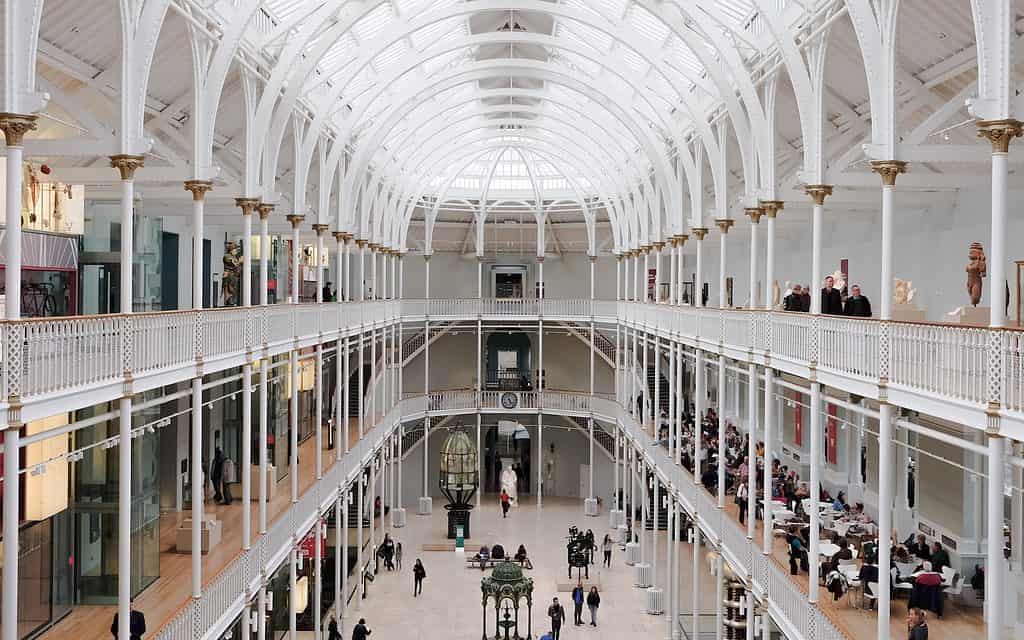
Don’t miss the skeleton of a giant deer, the skull of a whale or the first cloned Dolly the sheep. Are you a Harry Potter fan? And do you remember the independently moving figures in the first Harry Potter and the Philosopher’s Stone? These are the pieces you will find in the National Museum of Scotland, Lewis’s chess pieces.
Formula 1 racing cars are also on display in the museum.
Once you’ve seen the collection (the tour is at least 2 hours), head up to the rooftop where there is a terrace overlooking the city.
Admission to the National Museum of Scotland is free. Donations are welcome. Open daily 10:00-17:00.
The museum can be reached in a few minutes from the Royal Mile. I recommend going via Victoria St and Candlemaker Row. Both served as inspiration for the Cross Alley in Harry Potter.
TIP: If you enjoy Harry Potter and would like to find out more about the locations where Harry Potter was filmed in Edinburgh? Take a look at this popular tour which is designed as a fun Harry Potter quiz.
Greyfriars Kirkyard
Directly opposite the National Museum of Scotland is the old Greyfriars Kirkyard. He is known primarily for two reasons.
The first is a statue of Bobby the Sky Terrier, who is said to have walked to his master’s grave 14 years after his death and then was buried there himself. Walt Disney made a movie Greyfriars Bobby based on the touching story.
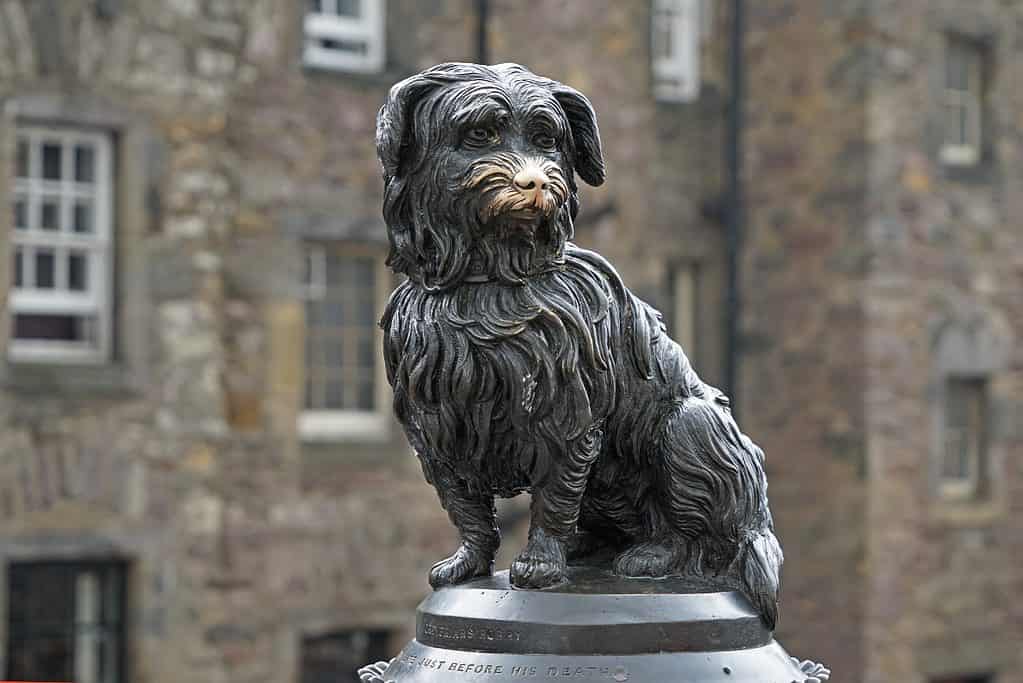
Tourists come here to stroke the nose of the Bobby statue for good luck. The locals are unhappy about this as it has irreversibly damaged the statue. Despite expensive restoration work, the statue could not be restored to its original state.
The second reason is Harry Potter. Several scenes were filmed here and JK Rowling even named several characters after the deceased.
The Underground City
The Old Town is not the oldest part of Edinburgh. Below the Royal Mile is the original town, which you can visit as part of a guided tour and learn more about Edinburgh’s dark history.

The tours have different focuses. Entry fees vary accordingly, starting at £14.
Holyroodhouse
Holyroodhouse forms the other end of the Royal Mile (the first one being Edinburgh Castle).
And it’s not just any palace. Holyroodhouse serves as the royal residence when the King is in Edinburgh. This is also where Sir Sean Connery was knighted.
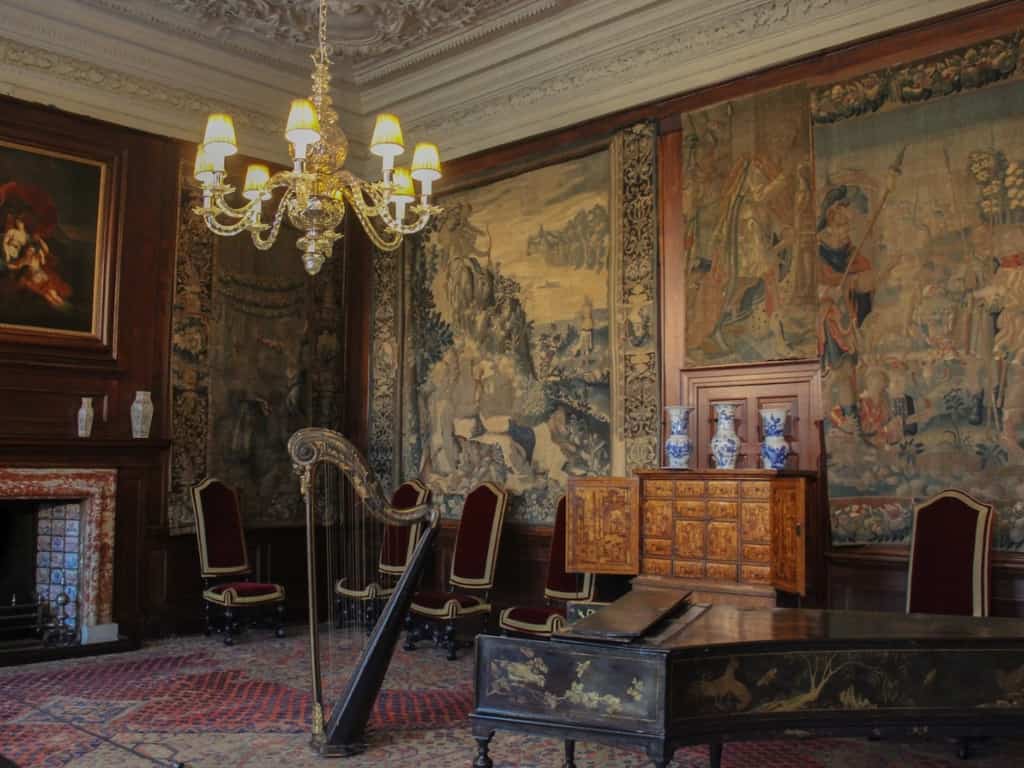
The palace is open to the public for most of the year when the King is not at Holyroodhouse (and that includes his chambers). In addition, you can peek into the chambers of Mary, Queen of Scots or the Great Hall with portraits of Scottish kings.
The palace also includes 4 hectares of gardens, which are bursting with colour in summer.
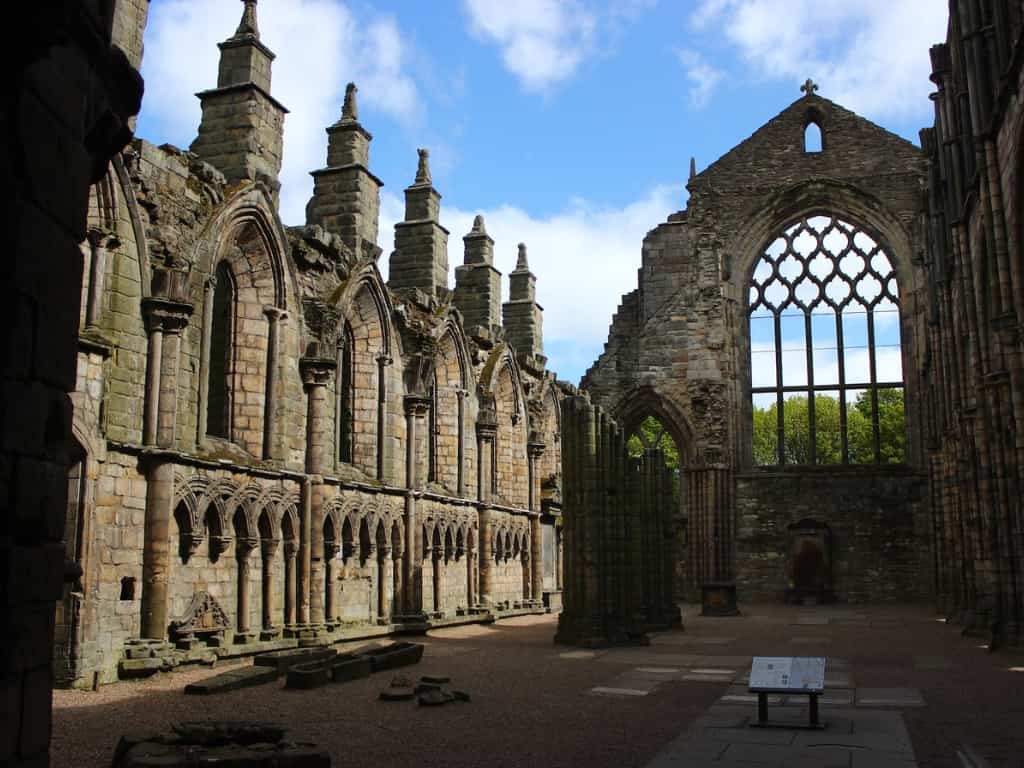
Admission and opening hours Holyroodhouse
Holyroodhouse is open daily from July to September, and closed on Tuesdays and Wednesdays the rest of the year. Opening hours vary by season:
- 1 April – 31 October 9:30-18:00 (last entry 16:30)
- 1 November – 31 March 9:30-16:30 (last entry 15:15)
Admission to Holyroodhouse is £20 for over 24s, £13 for 18-24s and £10 for children 5-17 when booked at least a day in advance. Tickets are more expensive when ordered on the day of the visit. Get your tickets here.
Hotels in Edinburgh 😴
Arthur´s Seat
Next to Holyroodhouse is Holyrood Park. A large area of greenery covering a 350 million year old extinct volcano.
The highest point is Arthur’s Seat at 251 metres above sea level. A place that is said to be named after the legendary King Arthur.
The views of the city from here are spectacular and it’s definitely one of the most beautiful places to visit in Edinburgh. It’s a popular spot for locals and tourists alike, so you won’t be alone.
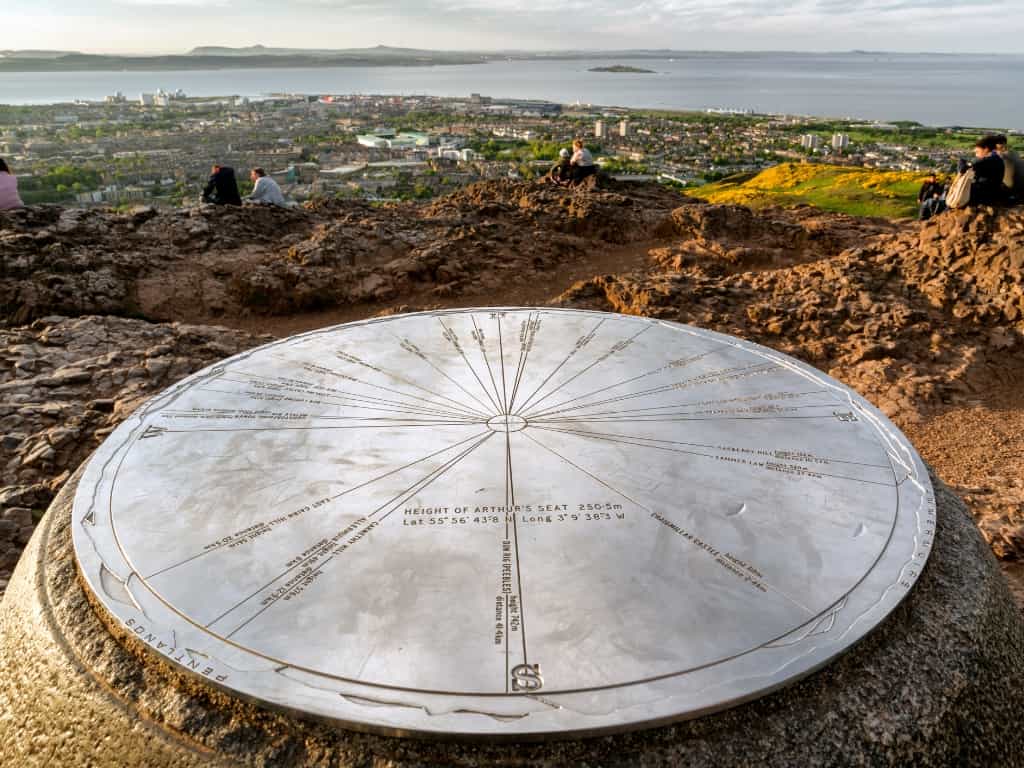
There are several routes up. You can go for example around the ruins of the Chapel of St. Anthony or around the Salisbury Crags. Salisbury Crags will be the first you see from Holyroodhouse. The view of Arthur’s Seat opens up beyond the cliffs.
The walk to Salsibury Crags is easy. It is a good idea to choose better shoes (no heels) for Arthur’s Seat. Depending on the route you choose, the path can be rocky, steep and muddy in places.
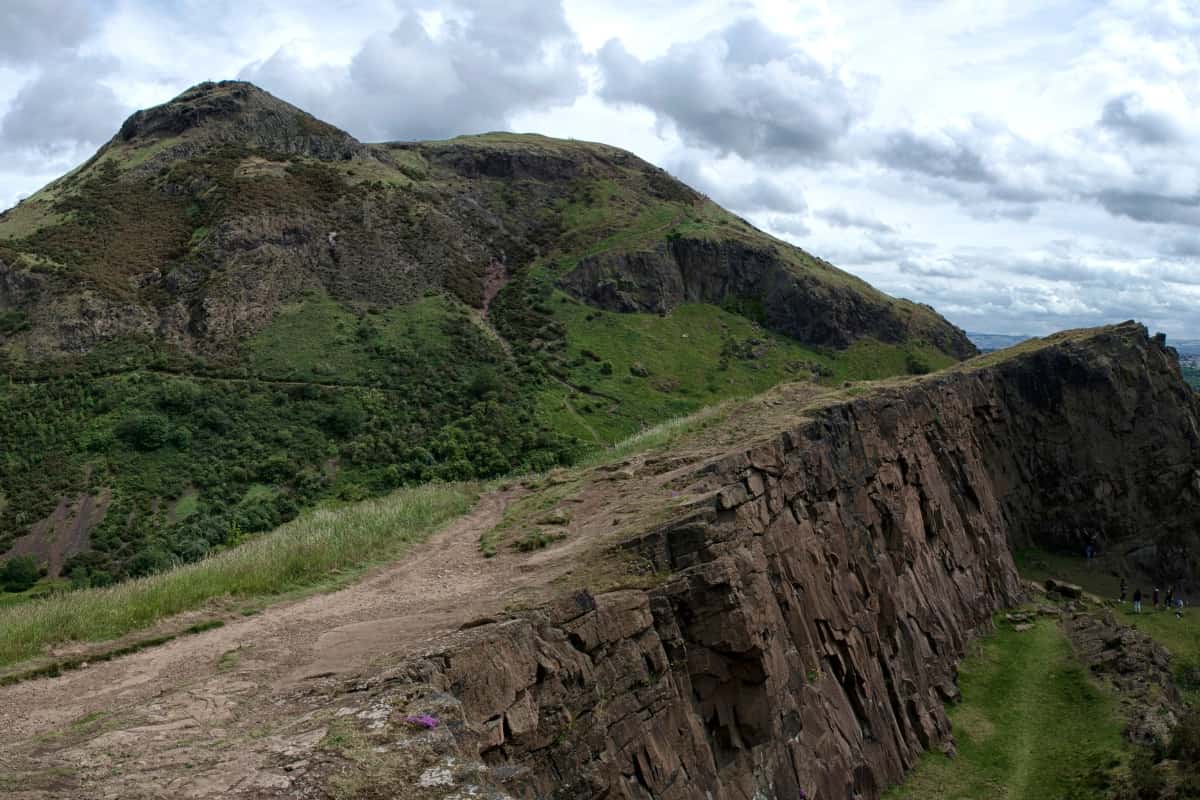
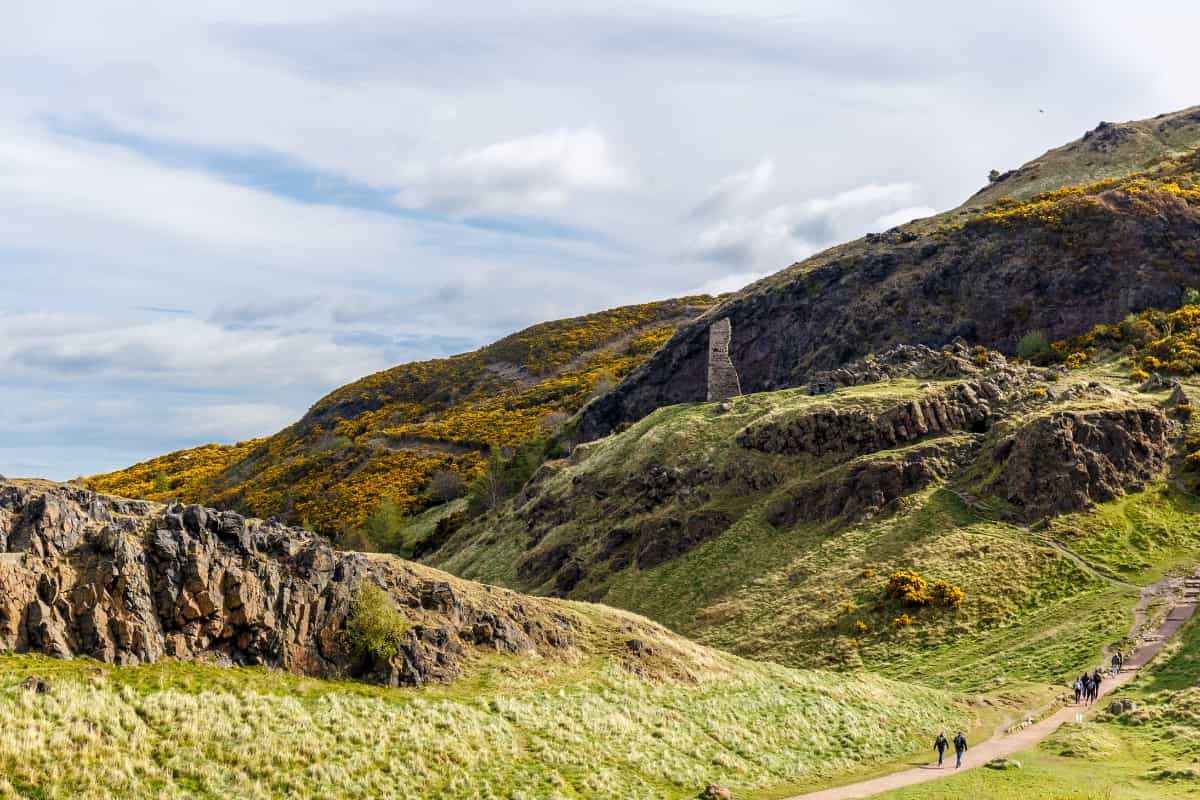
You will be at the top in 30-60 minutes. If you’re looking for an easier route, take a taxi to Lake Dunsapie (just say the name of the lake; there’s a parking lot), from where it’s half an hour to the top.
It’s pretty windy up there too, so pack an extra layer. And don’t forget water and something to eat. Arthur’s Seat is a great place for a picnic.
Scottish Parliament
The Scottish Parliament building is located directly opposite Holyroodhouse. The Parliament is open to the public, but without a guide you can only get to the main areas (including the exhibitions).
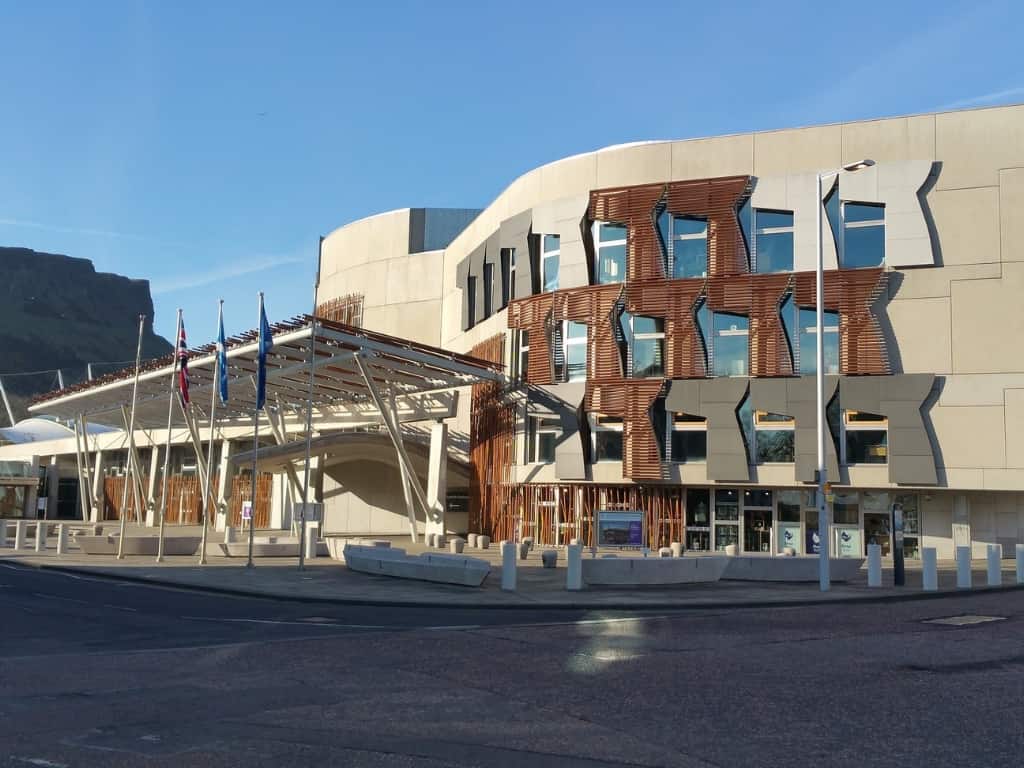
Guided tours last 45 minutes and are free of charge. Or attend a parliamentary meeting. Everything must be booked in advance here .
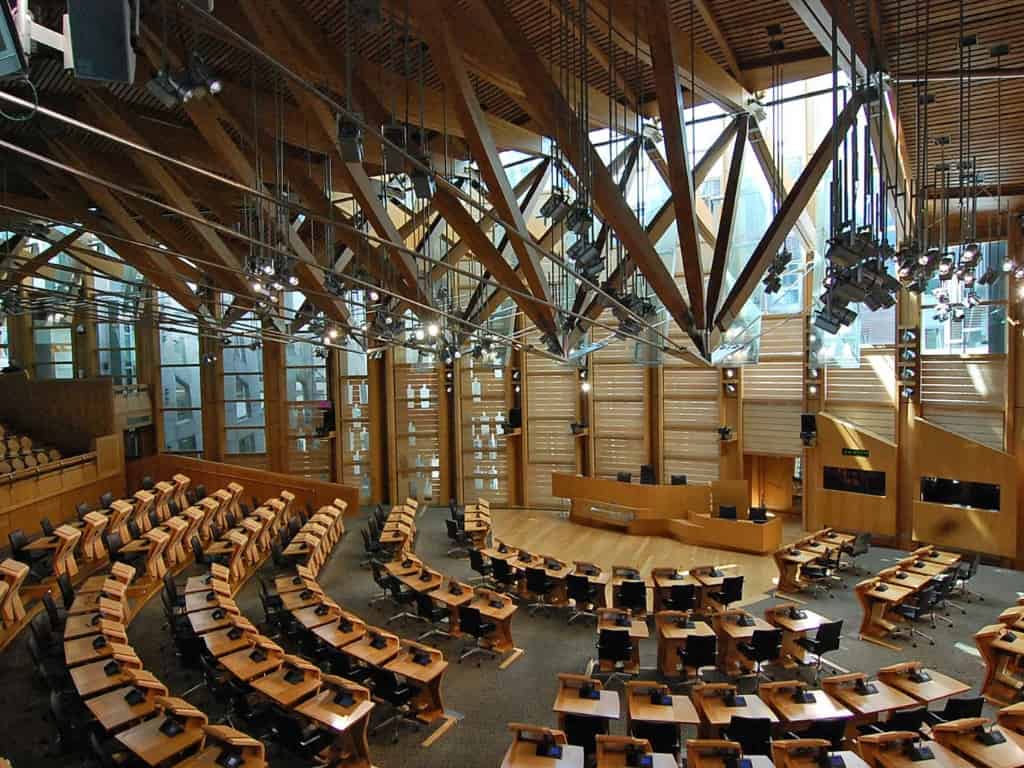
Canongate Kirk
Canongate Kirk is a small, austere church where some of Scotland’s most important figures are buried. For example, economist Adam Smith. The church is a short walk from Holyroodhouse.
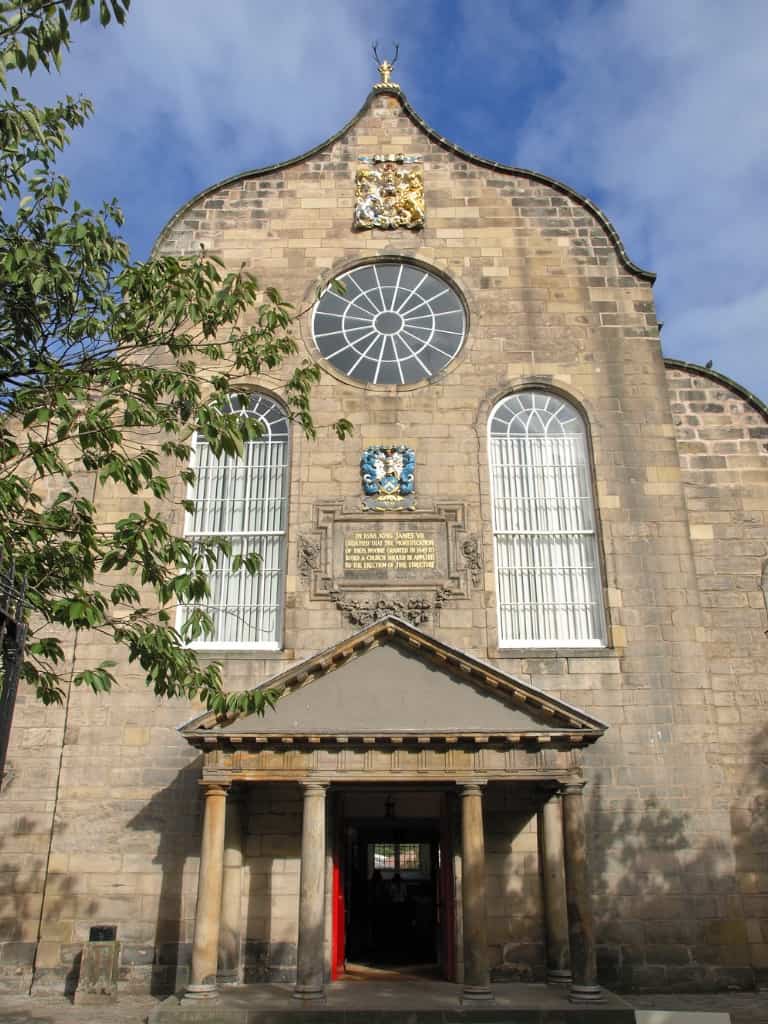
Scott Monument
We’re moving into New Town to Waverley Station. The New Town is immediately connected to the Old Town (Edinburgh Castle, Royal Mile, Grassmarket and surrounding streets) – just walk down the Royal Mile.
But the new city is not really new. It dates back to the 18th century.
You can imagine the Old Town as a labyrinth of alleys.
The new city has a perfectly fine-tuned structure against it. The streets were built in the Georgian style after the British flag.
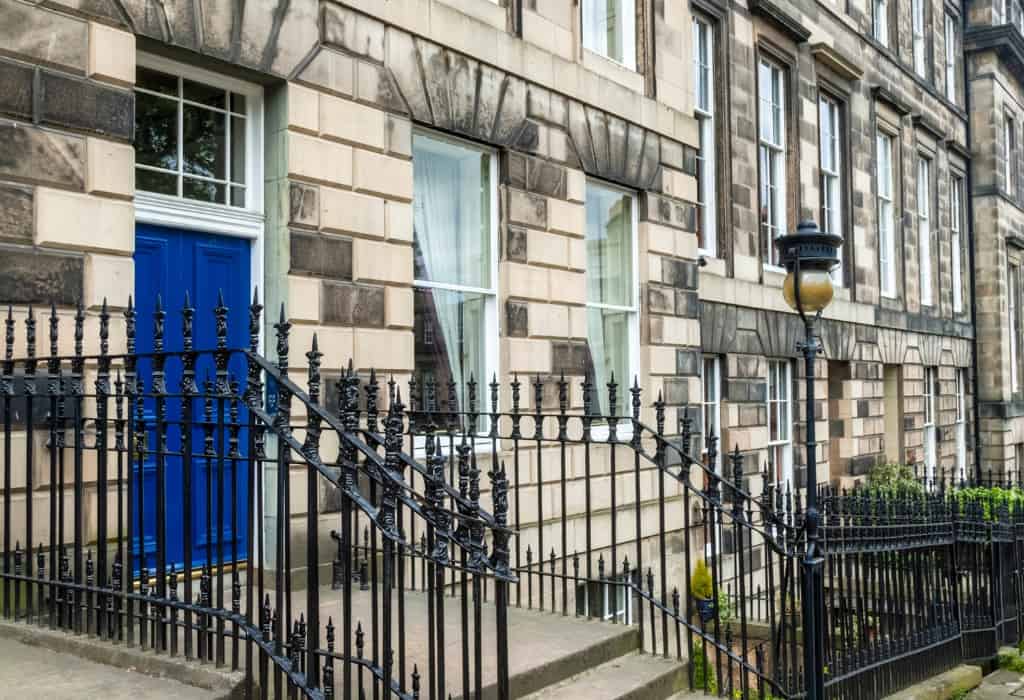
A short distance from the station you can see Scott Monument in the distance. A slender Victorian monument dedicated to Scotland’s most famous writer – Sir Walter Scott. More than 60 characters from Scott’s novels are depicted on the memorial.
Even Waverley Central Station is named after Walter Scott’s first novel.
You can climb 287 steps up a narrow spiral staircase to the top and enjoy views over Edinburgh. Entry fee is £8 (£6 for children). It also includes a tour of a small museum dedicated to the writer.
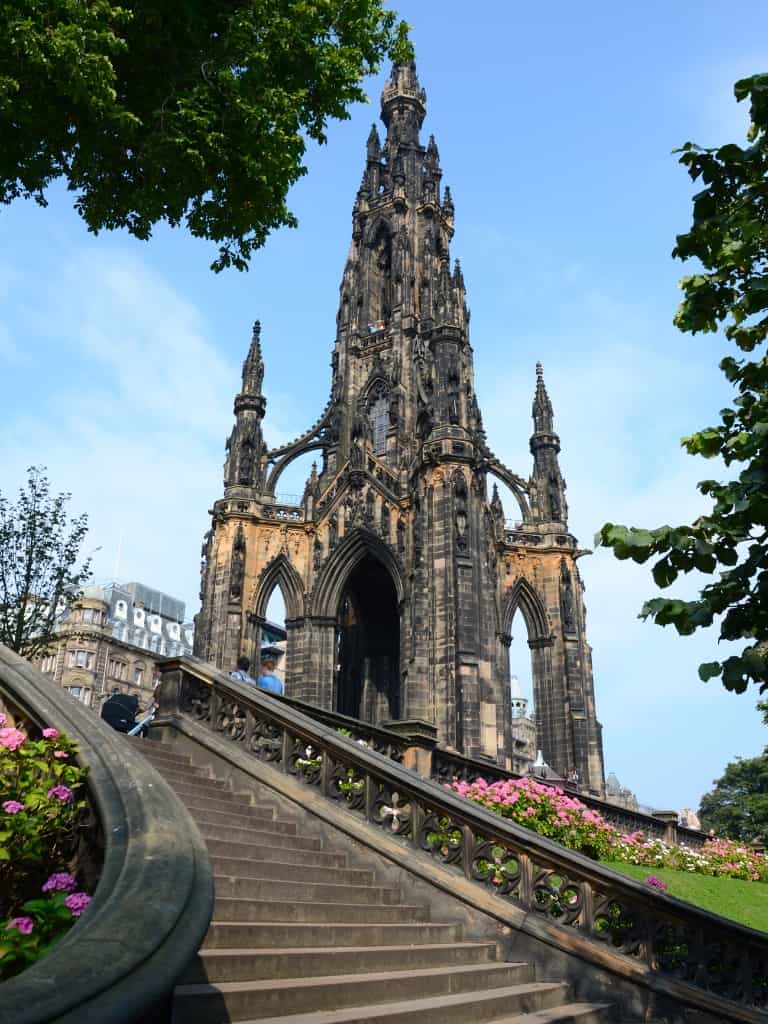
It is open daily from 10:00-15:30 (last entry time) with a lunch break from 12:30 to 13:45.
From Scott Monument you can continue along one of Edinburgh’s most famous shopping streets – Princes St.
National Gallery of Scotland
Just a few steps from the Scott Monument is the Scottish National Gallery. If you love art, you shouldn’t miss the gallery.
It includes works by Old Masters and European artists including Da Vinci, Raphael and Monet. One of the most important works are the olive trees by Van Gogh.
Admission to the Scottish National Gallery is free (donations are welcome – £5 is often recommended in Edinburgh). The permanent exhibition is complemented by temporary thematic exhibitions, which are subject to a fee.
It is open daily from 10:00-17:00.
Princes Street Gardens
Next to Princes Street, Princes Street Garden is located on the hillside below Edinburgh Castle. Large gardens with statues, fountains, floral installations and plenty of paths and benches to sit on. Worth seeing is the flower clock, which is renewed every year.
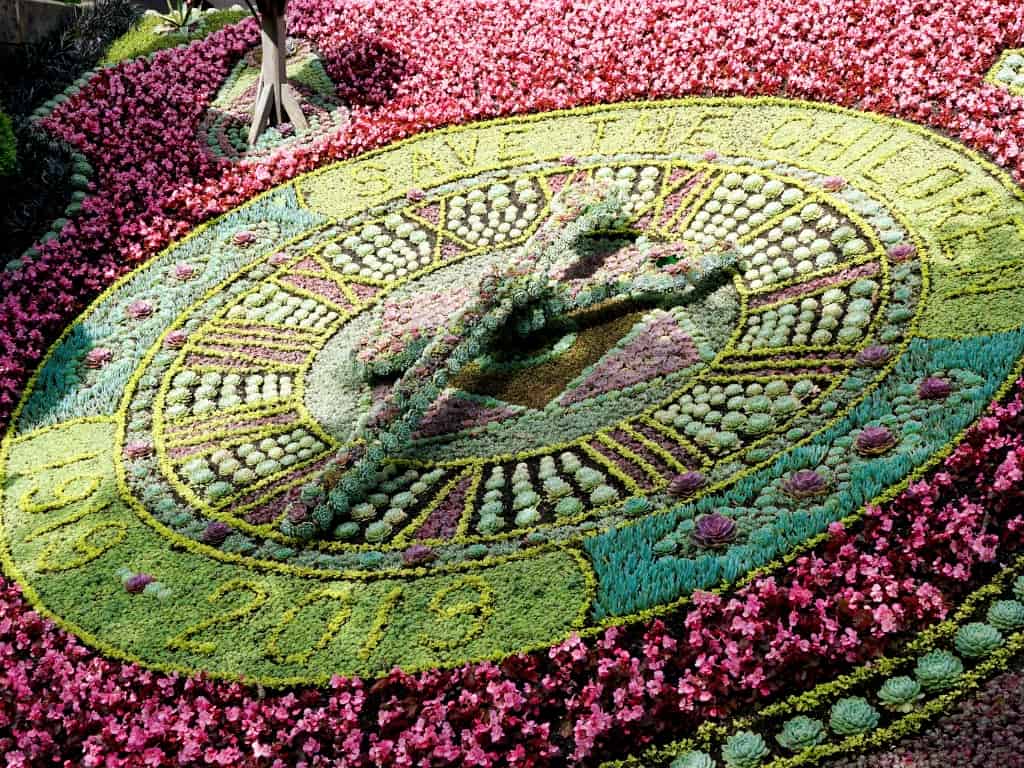
It is hard to believe that in the past, instead of gardens, there was Noch Loch, which was used as a rubbish dump and for the disposal of bodies.
Calton Hill
Calton Hill is another place with great views of Edinburgh. Compared to Arthur’s Seat, the ascent is short and easy.
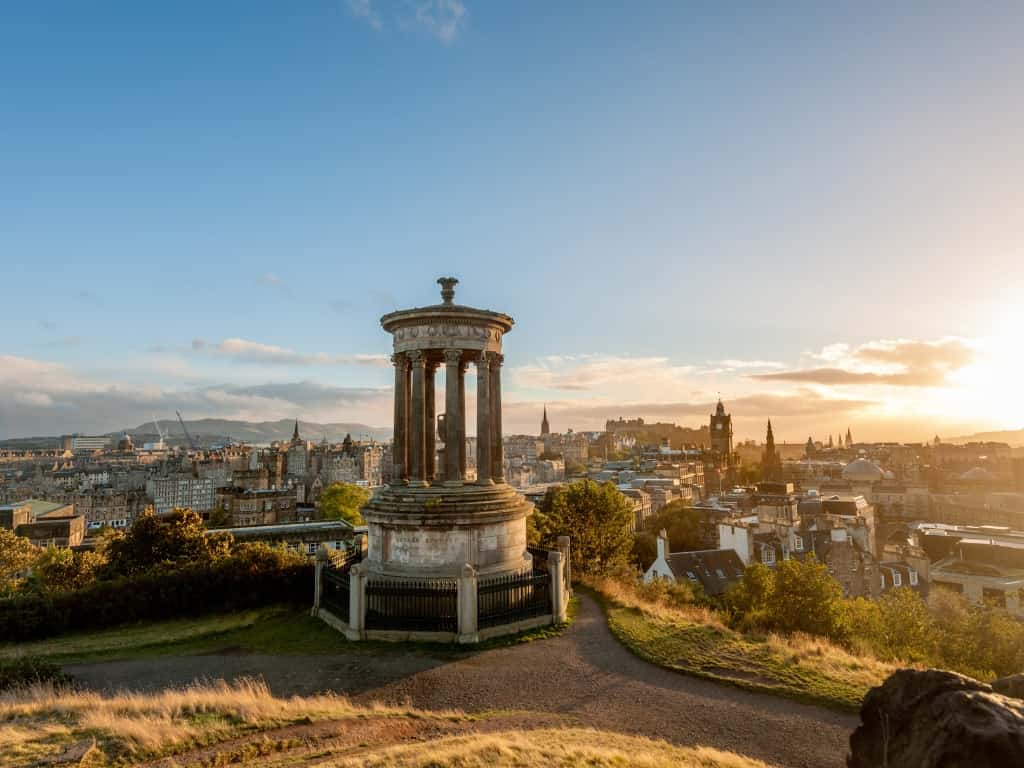
On its top there are several interesting buildings. For example, the National Monument, which commemorates the Athenian Acropolis. As a result, Edinburgh is known as the Athens of the North.
The Nelson Memorial is also normally open for £6. However, it is currently closed (December 2022).
Or visit the observatory and climb to the observation deck for a view.
Read: The best things to do in Scotland
Dean Village
Do you like quiet corners where you can just walk around and soak up the atmosphere of the place? Dean Village is perfect for this. It is located outside the centre in the West End.
Dean Village is a former village that was used for grain milling in the 12th century. The mill buildings were then converted into residential houses and today it is a charming residential area.
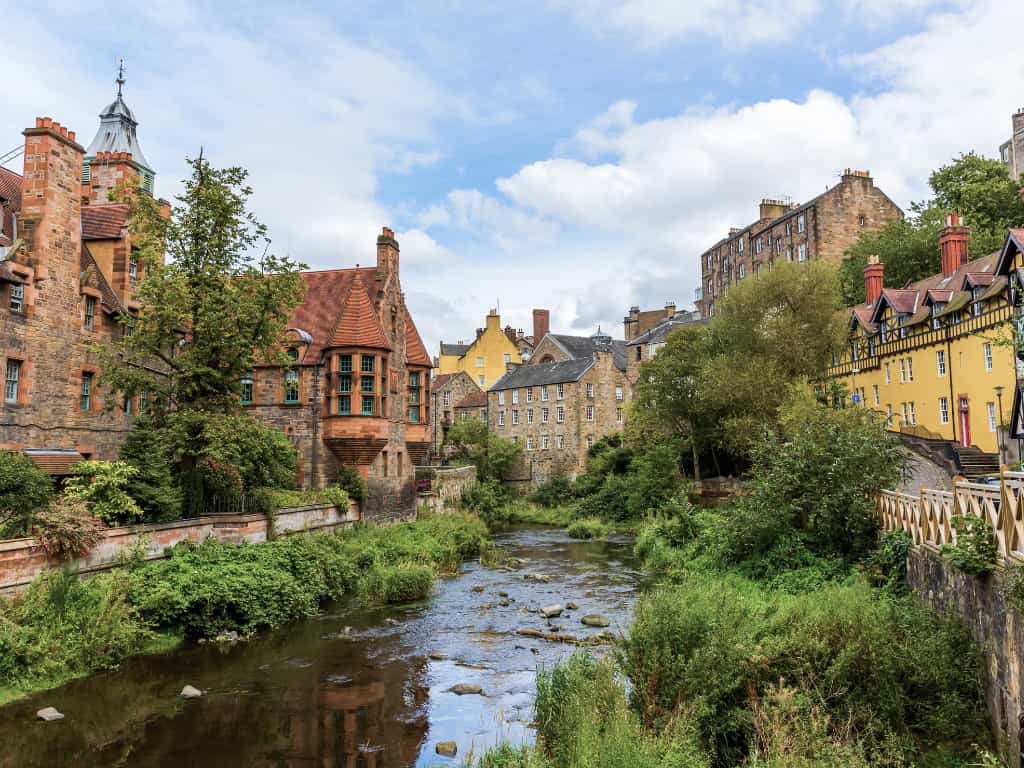
When visiting, it is necessary to take into respect the locals who live here. Do not disturb and think that you will not find any tourist facilities (toilets, restaurants, etc.). The easiest way to get here is to take tram 11 from Princes St and walk a few minutes from there.
From Dean Vilage you can take a walk along the Water of Leith Walkway, which takes you all the way to the North Sea coast in Leith.
Circus Lane
I love the magical alleyways off the beaten path. Circus Lane is one of them. Full of greenery with the Chapel of St. Vincent in the background. Completely different from the wide streets in the area.
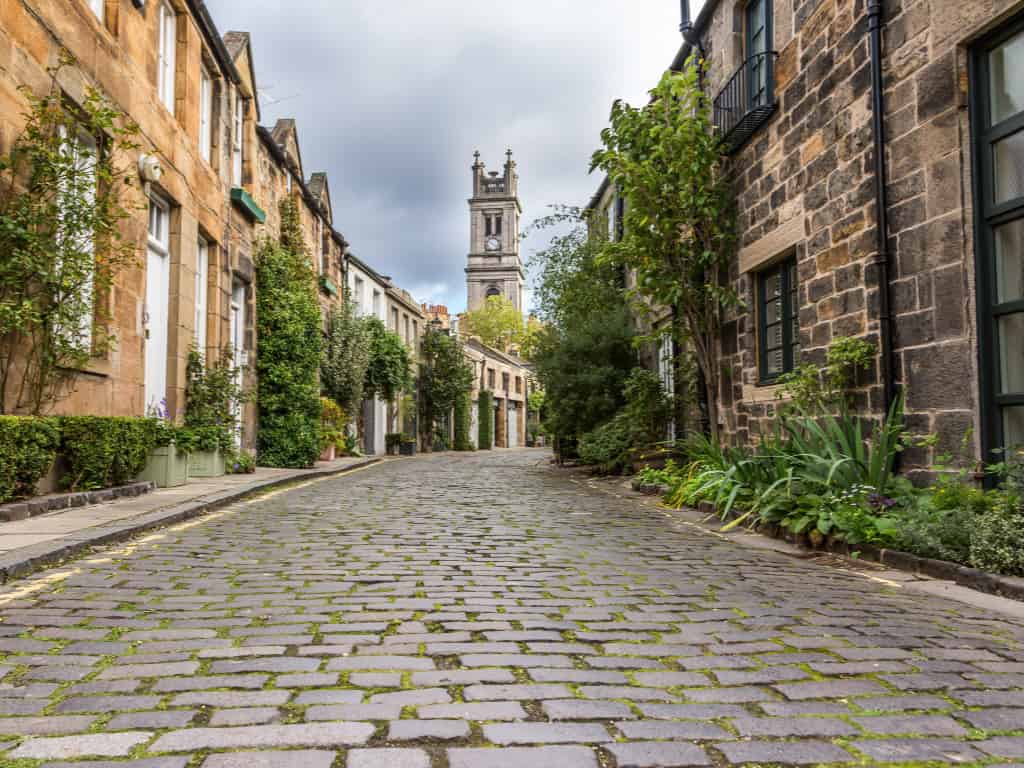
Located a quarter of an hour north-east of Dean Village in Stockbridge or 20 minutes from Princes St (buses 8 or 29 run here).
The Stockbridge Farmers’ Market is a short walk away, where you can buy local produce and eat well (they have excellent paella).
Royal Botanic Garden
Nearby Circus Lane is the Royal Botanic Garden Edinburgh, one of the oldest botanic gardens in the world. An oasis of flowers, trees and other plants in a busy city.
Plants and flowers are also changed throughout the year, so the botanical garden will always surprise you with something new.
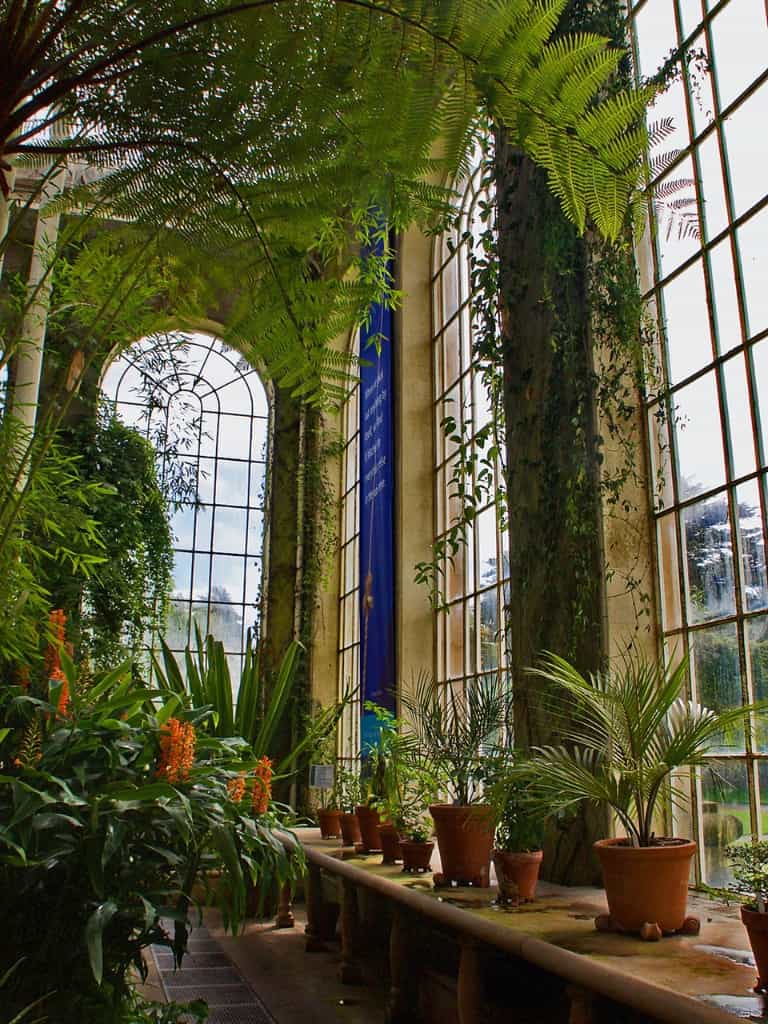
Visiting the Royal Botanic Gardens is free. A small entrance fee is paid for entry to the greenhouse (worth it) or for themed exhibitions.
Opening hours vary by season:
- March-September 10:00-18:00 (last entry 17:15)
- October and February 10:00-17:00 (last entry 16:15)
- November-January 10:00-16:00 (last entry 15:15)
Read: The travel guide to Scotland
Royal Yacht Britannia
To the northeast of the city centre is the seaside district of Leith. The Royal Yacht Britannia is moored in her harbour.
The yacht, which has served the Royal Family for over 40 years, has covered 1 million nautical miles and 968 official visits.
Today it is one of the most popular sights to see in Edinburgh.
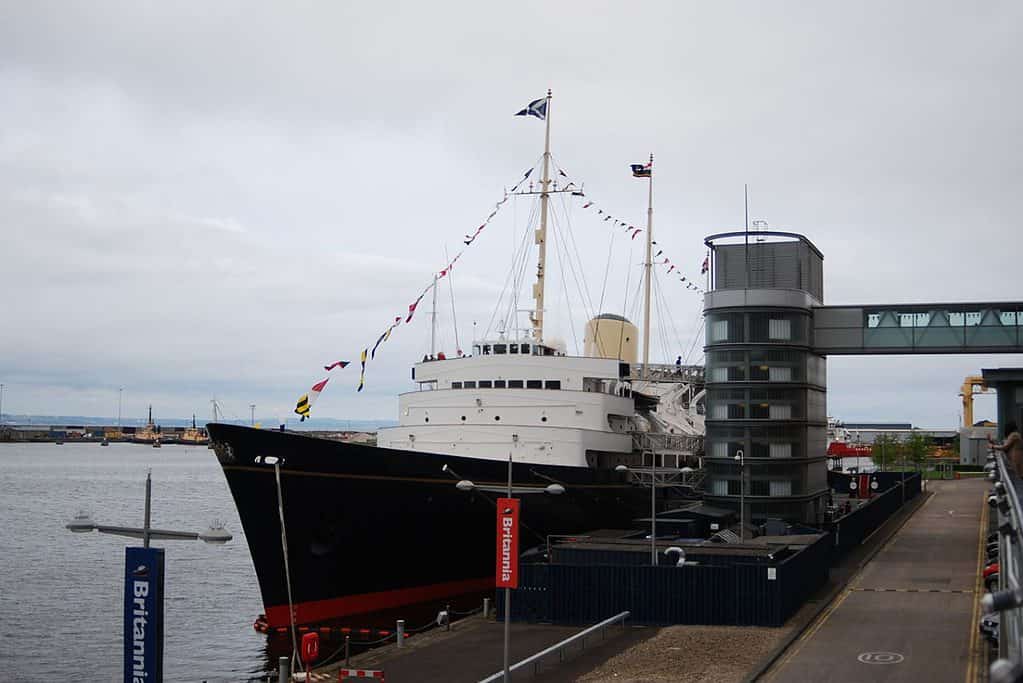
From Princes Street, you can get here by bus 11 or 34. There is a bus from the Old Town to the National Museum of Scotland 35. The journey takes just over half an hour in all cases. I recommend the local Transport for Edinburgh app for up-to-date connections (more later in the article), but Google Maps is also good.
Admission to The Royal Yacht Britannia is £19.50, £13.50 for students and £9.25 for children 5-17 years. Opening hours vary by season:
- November-March 10:00-17:00 (last entry at 15:00)
- April-August 9:30-18:00 (last entry at 16:00)
- September 10:00-18:00 (last entry at 16:00)
- October 10:00-17:30 (last entry at 15:30)
Forth Bridges
Many locals will recommend Forth Bridges for you to visit. These are iconic bridges in South Queensferry, half an hour from Edinburgh.
The most famous is the red railway bridge, which is more than 125 years old. Today, thanks to its historical significance, it is a UNESCO World Heritage Site. The bridge connects South Queensferry and North Queensferry.
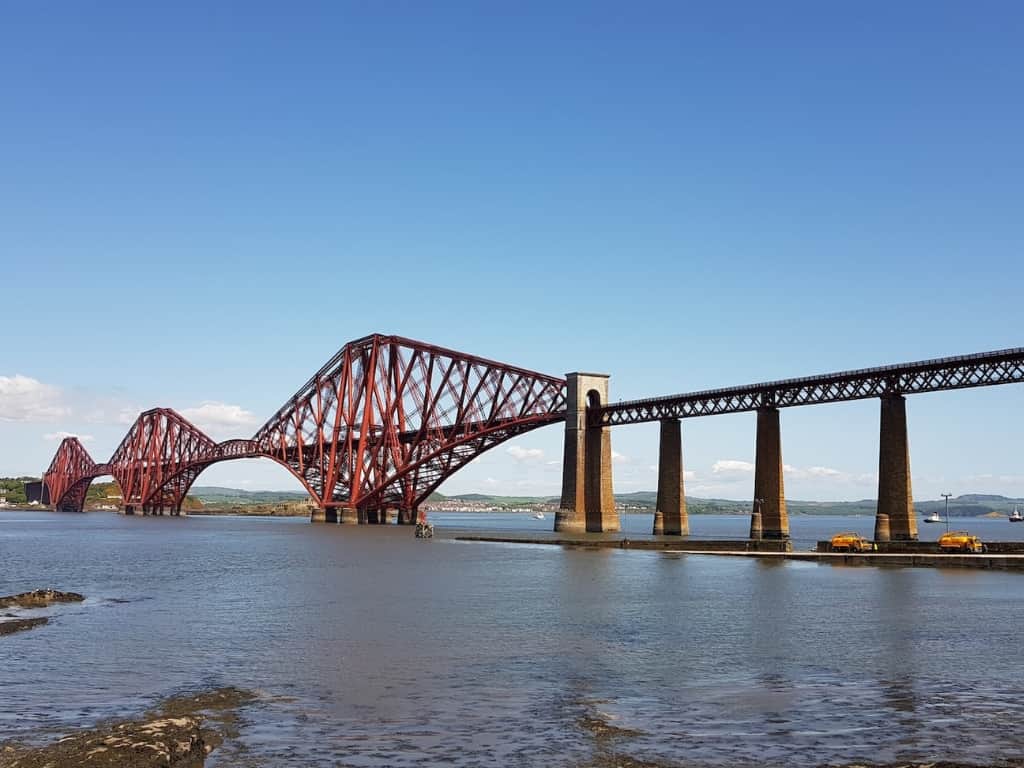
North Queensferry is a smaller village, famous for its Deep Sea World aquarium (one of the largest underwater tunnels in the world is worth seeing).
You can get here by train from Dalmeny Station. The journey takes just 3 minutes and costs £2.90. It’s not the cheapest, but on the other hand, driving over the Forth Bridge is an experience in itself.
Or take one of the walking trails, of which there are several. One starts at Dalmeny station in South Queensferry and is 8km long (can be cycled down). Along the way you will be guided by several information panels with interesting facts about the area.
The most popular option is sightseeing boat cruise. The ship sails right under the bridges and around Edinburgh. And you might be lucky enough to see puffins and sea lions in their natural habitat.
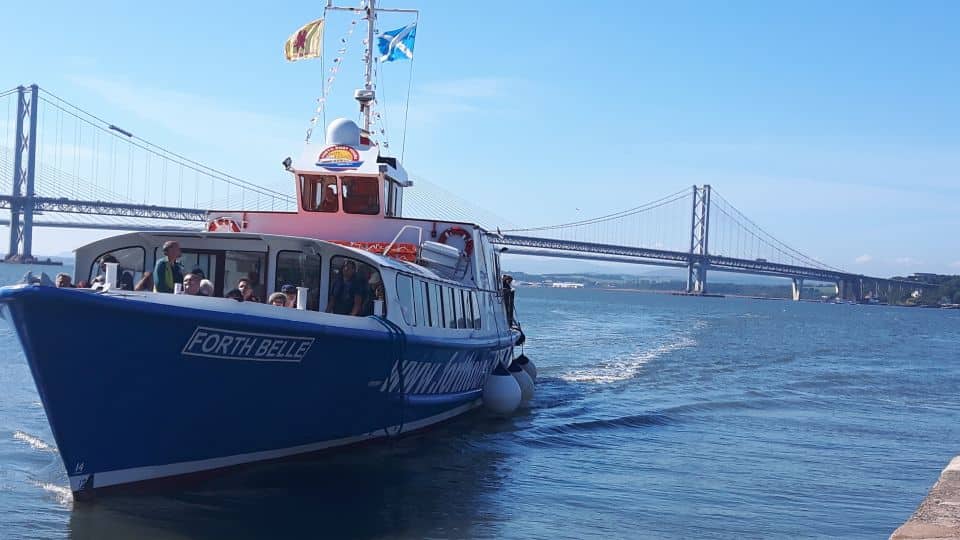
How to get to Forth Bridges from Edinburgh
South Queensferry can be reached from Edinburgh by train from Waverley Central Station to Dalmeny Station. The journey costs £5.20. From the station it is then about 15 minutes on foot to the bridges.
For current connections and prices, visit Scotrail.
Another option is the 43 bus from Princes St which runs every 20 minutes (every 30 minutes on Sundays). The bus ride takes 30 minutes and costs £2.80.
Trips around Edinburgh
Edinburgh is surrounded by the beautiful countryside for which Scotland is known around the world. You can buy a car rent a car right at the airport (or many other places). I recommend to use verified companies such as Rentalcars.com.
To rent a car, you will need a travel document, a valid driving licence and a credit card. At the same time, a refundable deposit will be charged to your bank account for the duration of the rental period (varies by rental company – please check the exact amount with the car model you choose). The deposit will be automatically refunded to you when you return the car.
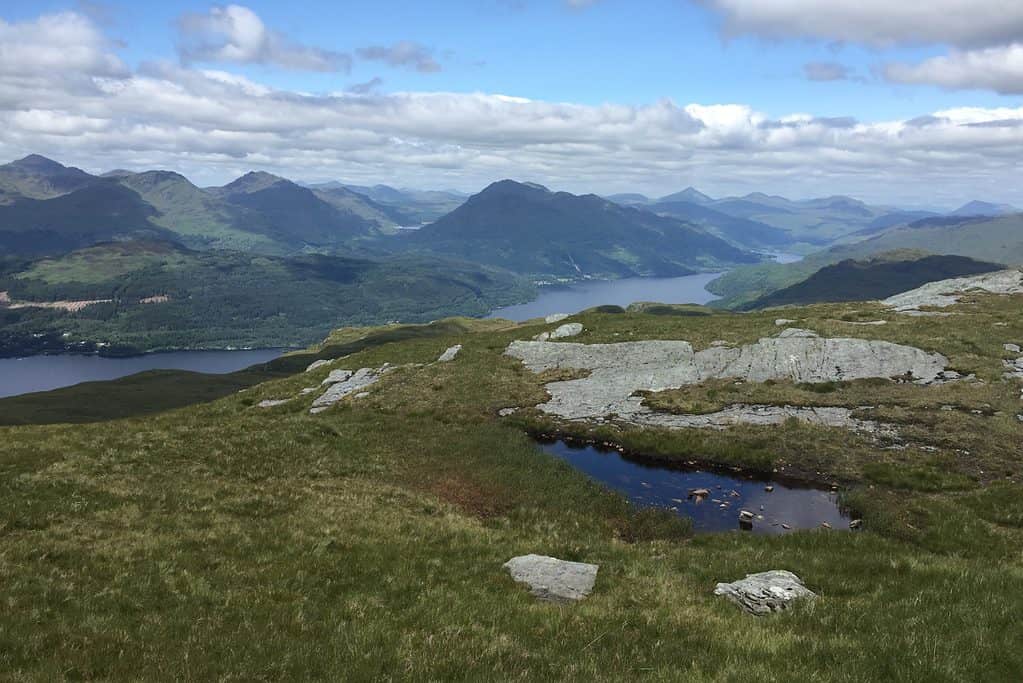
Less than two hours from Edinburgh is Loch Lomond and The Trossachs National Park, where you can hike to the legendary summit of Ben Lomond overlooking Loch Lomond. The iconic Glen Coe Valley is over 3 hours away.
It’s also a short drive to the Cairngorms National Park. It’s a 5 hour drive to the Isle of Skye, but well worth it.
Where to stay in Edinburgh?
- Haymarket Hotel: This hotel is in a Victorian house on a quiet street on the edge of the centre. It is well connected to the airport. Rooms are stylish, cosy and decorated in a traditional style.
- Cityroomz Edinburgh: Hotel opposite the airport bus stop. Rooms and apartments with kitchenettes are available.
- ibis budget Hotel: Smaller, modern rooms with the necessary amenities and a convenient location near the airport
- Edinburgh House Hotel: Budget hotel well located for exploring the Old Town and the coast
Read our detailed guide to accommodation in Edinburgh.
How to get from the airport to Edinburgh city centre?
The airport for Edinburgh lies just 13 km from the city centre. It only has one terminal so it’s quite busy.
The city can be reached by bus or tram. Taxis and Uber work well too.
I recommend to use Airlink buses – best price and they are reliable. Buses stop directly in front of the terminal at stop A.
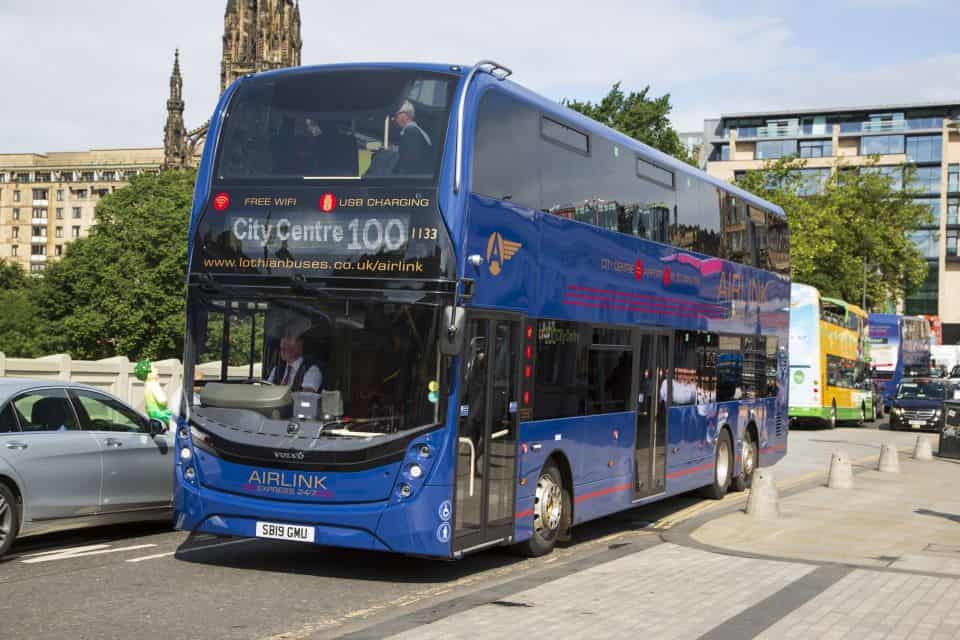
Airlink buses are blue with Airlink lettering – you won’t miss them. Most of the time there will be some standing around because they run every 10 minutes between 4:30-01:00 and every 30 minutes at night. Similarly, buses run back from the centre to the airport.
You can buy your ticket on the spot from the driver using contactless or cash (you must have the exact amount; no refunds). A one-way Airlink bus ride costs £5.50 (£2.75 for children aged 5-15) and a return ticket costs £8 (£4 for children aged 5-15). You can be in the city centre at Waverley Central Station in 30 minutes.
The simplest option is buy tickets in advance print them out and just show them to the driver when you board. The ticket is not time-specific, so you can take the connection that suits you best. I’d like to point out once again that you have to print your tickets at home (digital tickets are not accepted on mobile phones).
Airlink is complemented by Skylink 200 (which goes to the north of Edinburgh) and Skylink 400 (which connects the airport with the south of the city). Both run every 30 minutes from 4 a.m. to midnight.
Taxi is a great option if more of you are travelling. The journey from the airport to the city centre costs approximately £23.
Public transport in Edinburgh
Edinburgh is a relatively small city (500,000 people). The city centre is easily walkable. Buses or trams will take you to more distant places. The buses have their own lanes, so they are reliable and you can avoid traffic jams.
Tickets
Edinburgh offers several types of tickets depending on which zones you plan to be in.
The city itself is one zone where you can use a single SINGLEticket for £2 or a DAYticket for £5 (valid for unlimited bus and tram travel within Edinburgh). This does not include the Airlink bus from the airport.
These are paper tickets (SINGLEticket and DAYticket), which you can pay for at the driver’s with a contactless card or cash (beware, they do not refund – you must have the exact amount).
The second option is to buy tickets via the M-Tickets app.
In addition to paper tickets or tickets purchased through M-Tickets, there is also the TapTapCap option.
If you have experience of transport in London, TapTapCap works on a similar principle. When you board, there is a sensor at the driver’s side to which you attach your card. Wait until the green light comes on and you can sit down. This will automatically deduct the lowest possible fare.
You will pay a maximum of £4.40 per day within Edinburgh. From this amount onwards, you ride for free. This makes TapTapCap more convenient than a day pass.
Please note: TapTapCap is not valid for trams. If you plan to use the trams, buy a day pass from the driver.

Sightseeing bus
Sightseeing bus is another alternative to explore the city. The buses are double decker and have an open roof, so you’ll have a great view of the city.
It stops at several stations where you can get on and off at any time. Anywhere and as often as you need.
Buses run daily from 9:00-17:00. Get your tickets here.
What to eat and where to eat in Edinburgh?
In Edinburgh, you can have almost anything you can think of. There are restaurants serving international cuisine and typical Scottish pubs.
I recommend going to the pub for the right atmosphere. With leather furniture, fireplace and wood paneling. Moreover, the prices here are usually better than in restaurants.
Edinburgh has lots of great places to eat. In the centre, for example, there’s Greyfriars Bobby’s Bar opposite the National Museum of Scotland.
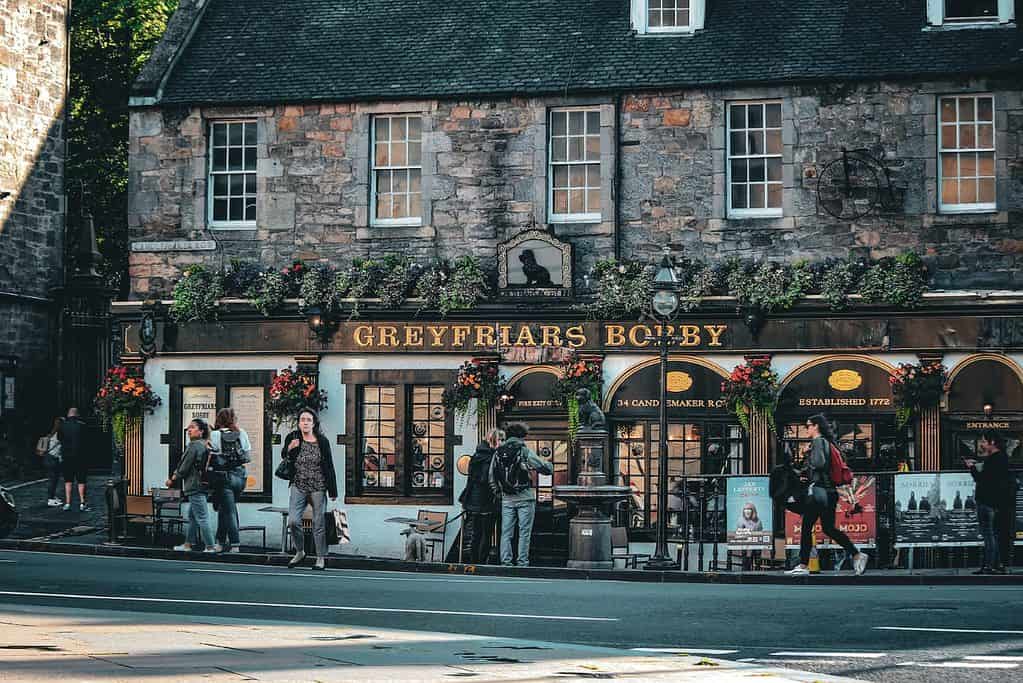
There are several traditional pubs in the Grassmarket, the Royal Mile and the surrounding streets, where you can enjoy a great meal (you just have to take into account the small price premium due to the location).
And if you really want to enjoy Scottish cuisine, head to Makar’s Mash Bar.
A traditional Scottish dish is haggis, or sheep tripe on onions with oatmeal cooked in a sheep’s stomach. With mashed potatoes and turnips. Other classics include scotch eggs, scotch salmon or leg of lamb with mash (there are various variations of mash to choose from, including spicy mash with sausage).
A rich British breakfast is served in the morning and traditional tea with fluffy scones with jam and cream in the afternoon.
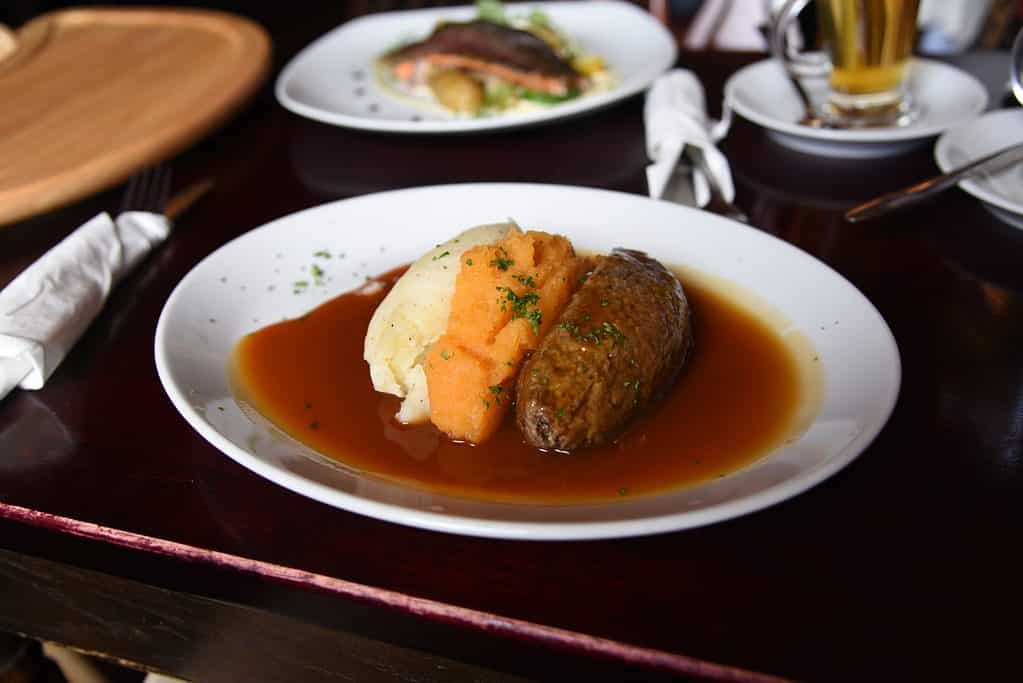
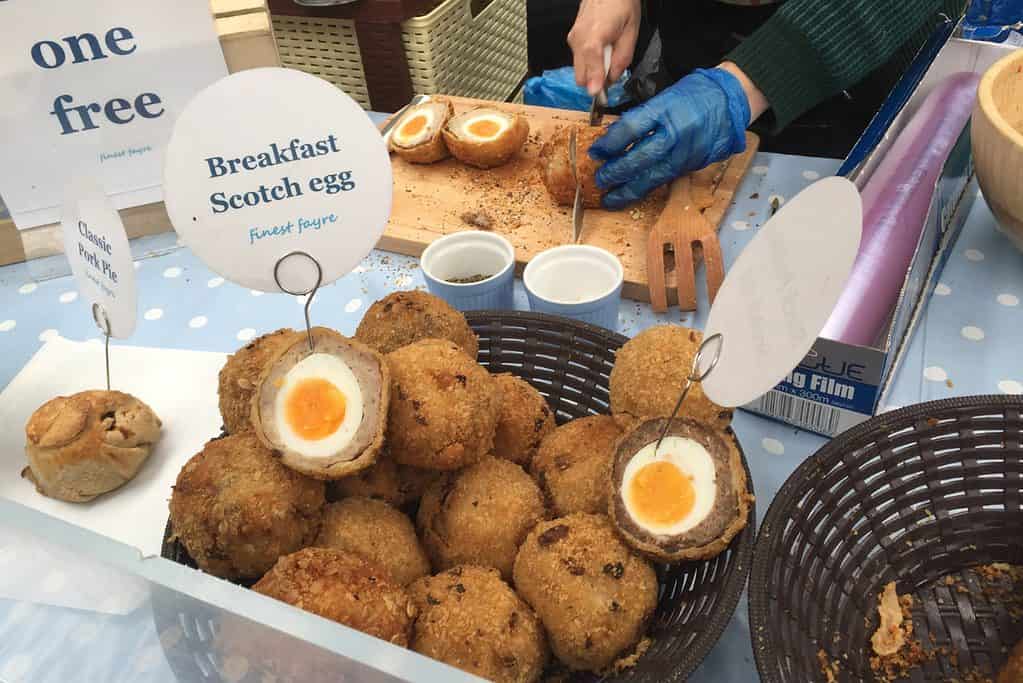
Prices in Edinburgh
A meal in a cheap restaurant costs an average of £15 and a three-course dinner for two in a restaurant costs £75. The prices of basic foodstuffs are as follows:
- Bread 500 g – £1.41
- Cheese 1 kg – £9.07
- Chicken 1 kg – £7.08
- Potatoes 1 kg – £1.10
- Apples 1 kg – £2.10
- Water 1 l – £1.14
- Domestic beer 0.5 l – £1.67
- Bottle of wine – £8
What is the weather like in Edinburgh?
The weather in Edinburgh is windy, wet and rainy.
Summers here are pleasant and relatively warm, but not scorching like in Barcelona or Rome. It’s also the driest time of the year, but still…we’re in Edinburgh, don’t forget to pack an umbrella and an extra layer.
We visited Edinburgh and Scotland at the beginning of July and it rained a lot (it even snowed on the Isle of Skye!).
The rest of the year is considerably rainy. Winters here are colder with average temperatures around 1-2 °C. Occasionally it snows, so that the city is covered in a thin white blanket.
I recommend checking the weather before you visit – the best app is Windy.com, where you can get detailed reports including cameras.
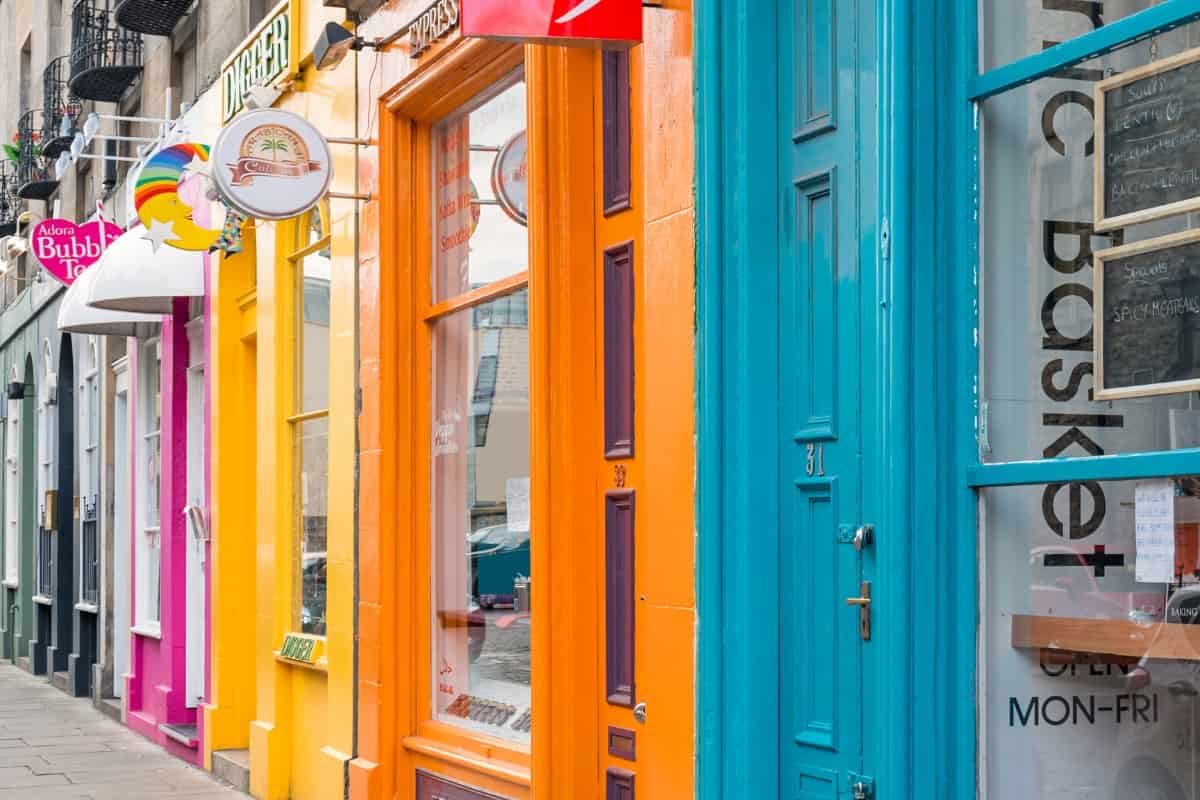
Tips before visiting Edinburgh
- Don’t call the locals English. Given the long-standing rift between Scotland and England, they are very susceptible to this.
- Apart from that, the locals are warm and hospitable.
- In the city centre you can log on to free wifi. Simply search for EdiFreeWifi and fill in your basic details (or Facebook login details).
- Planning to visit Edinburgh in August? Book even further in advance than usual, as the Fringe Festival is taking place here.
- If you are driving your own car, remember that in Scotland you drive on the left-hand side of the road. Petrol prices are around £1.60 per litre.
- You can use the Transport for Edinburgh app to find bus and tram links.
- The basic rate for a taxi is £3 and you’ll pay an average of £1.42 for each additional kilometre. A cheaper alternative is Uber.
- Edinburgh offers public toilets to locals and tourists, which are in most cases free of charge. For example, it is located to the left of Edinburgh Castle, in Princes Street Gardens or on the promenade by Portobello Beach. The complete list can be found here.
These were our picks for the best things to do in Edinburgh. Do you have a question? We’ll be happy to answer it in the comments below. Have a safe journey!
Find out more about the UK
EDINBURGH: Check out our recommendations for where to stay in Edinburgh (best neighbourhoods including a map).
SCOTLAND: Scotland is one of the most beautiful areas of the UK – here’s a list of things to do in Scotland, including a map and useful information, or get inspired by the things to do on the Isle of Skye.
Planning a trip to Scotland? We’ve put together a complete guide how to plan perfect trip to Scotland. A sample itinerary for a roadtrip in Scotland will help you plan your trip.
LONDON: Read more about things to do in London. To help you plan your trip, we’ve created a 3-day London itinerary. In a separate article, we share tips on what to do in London with kids.
